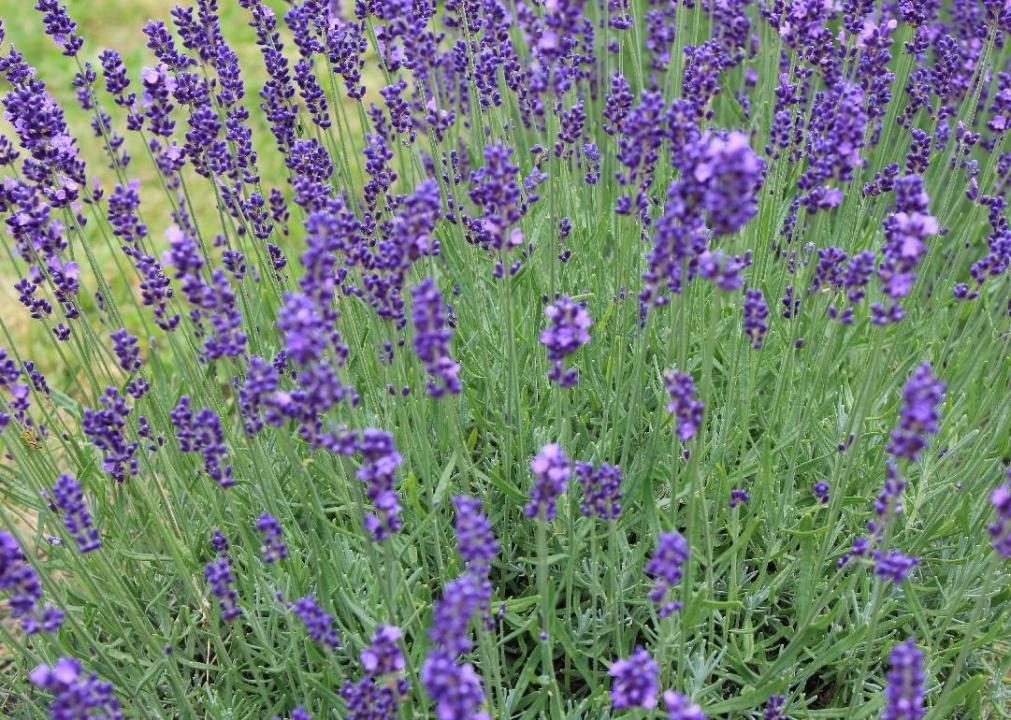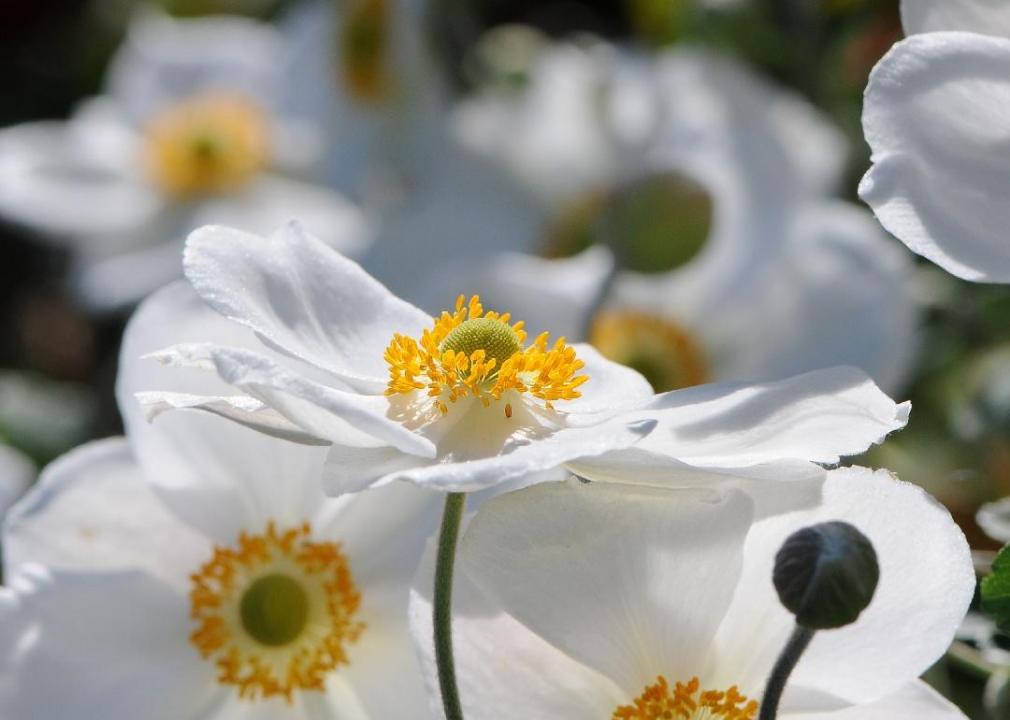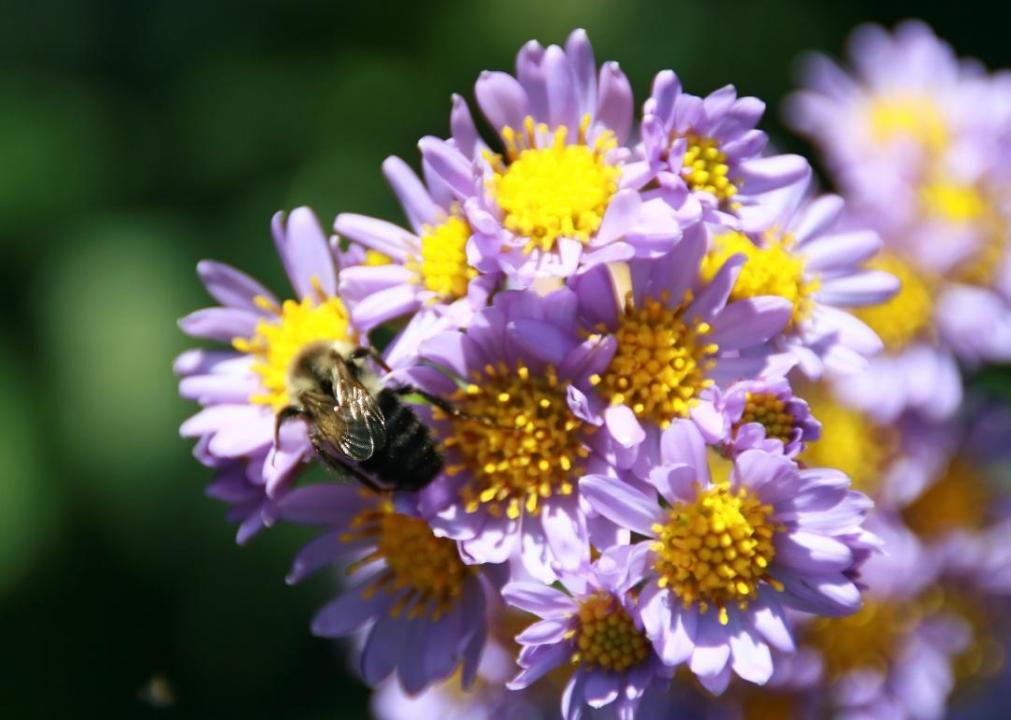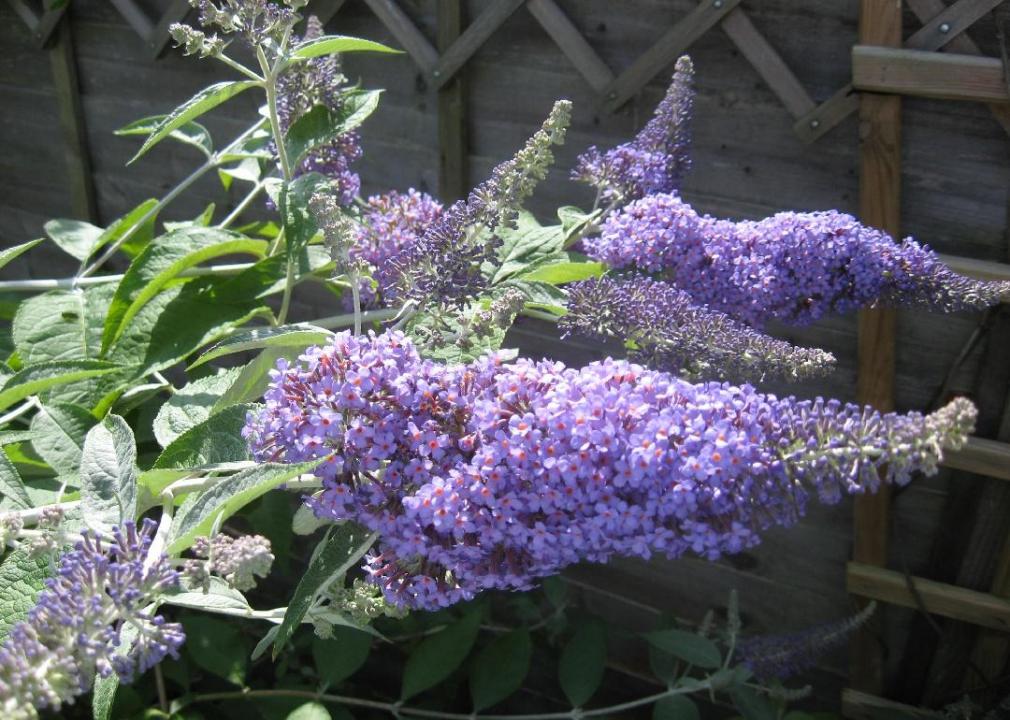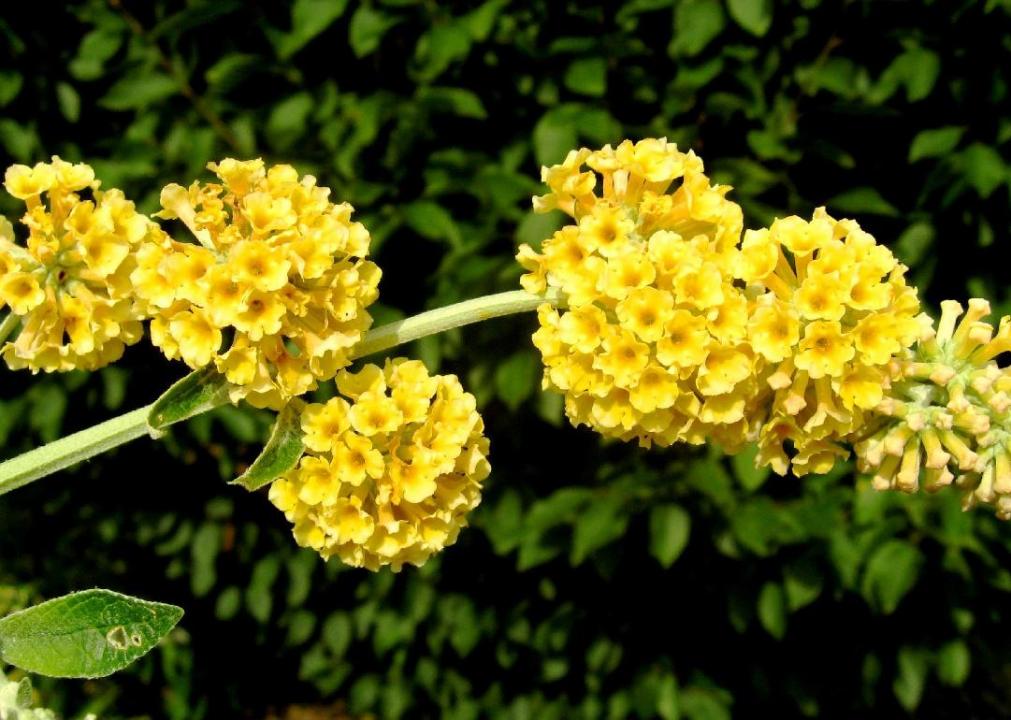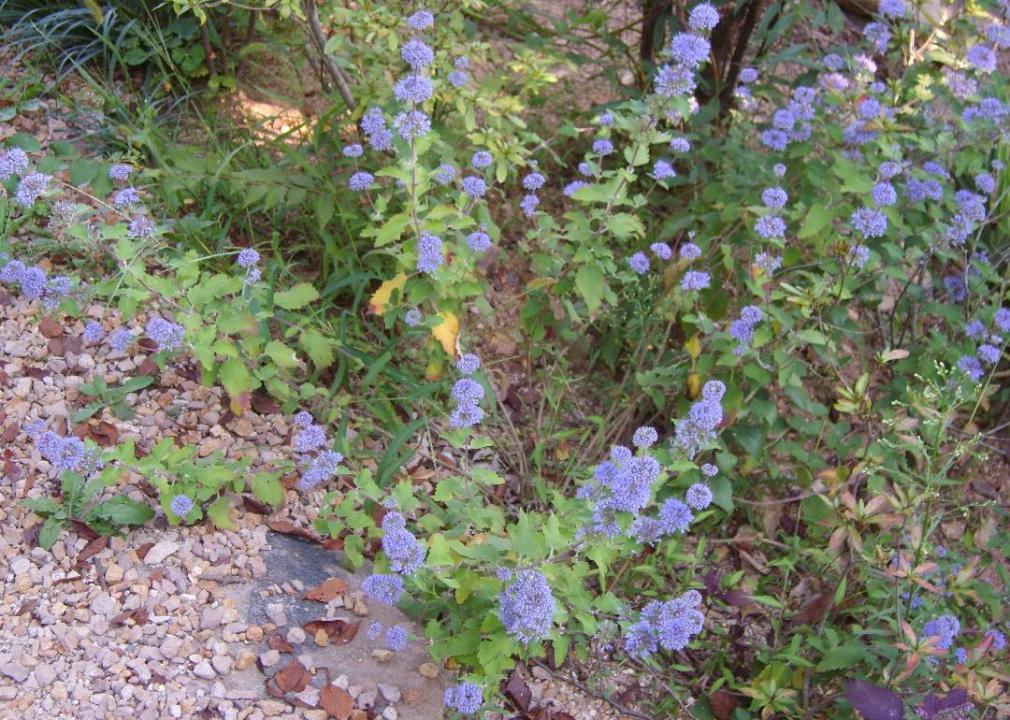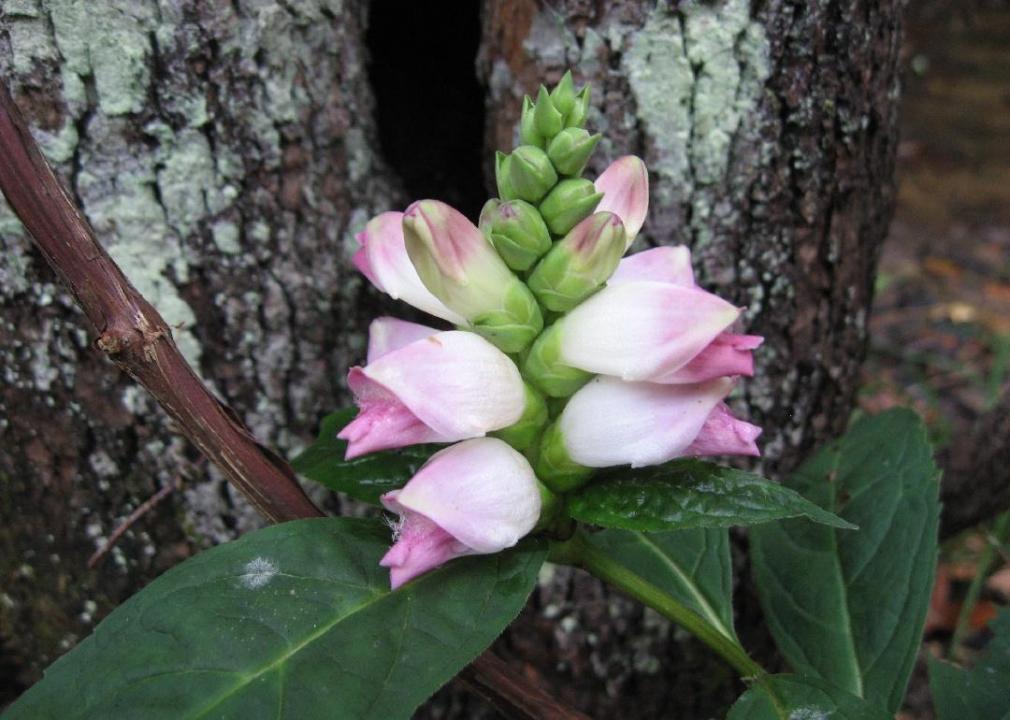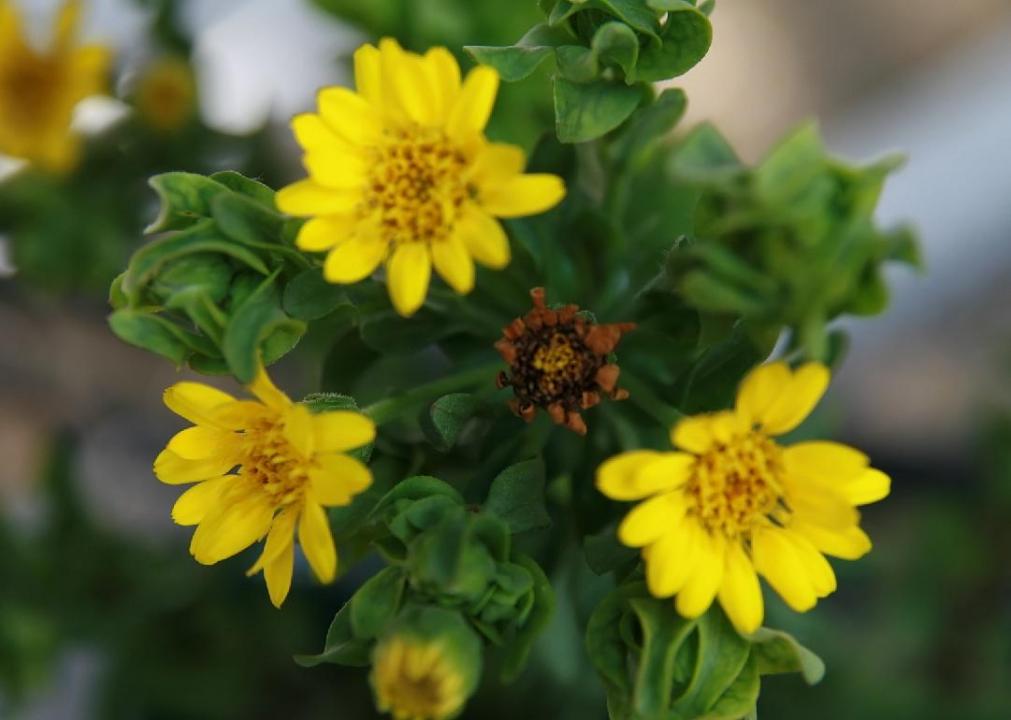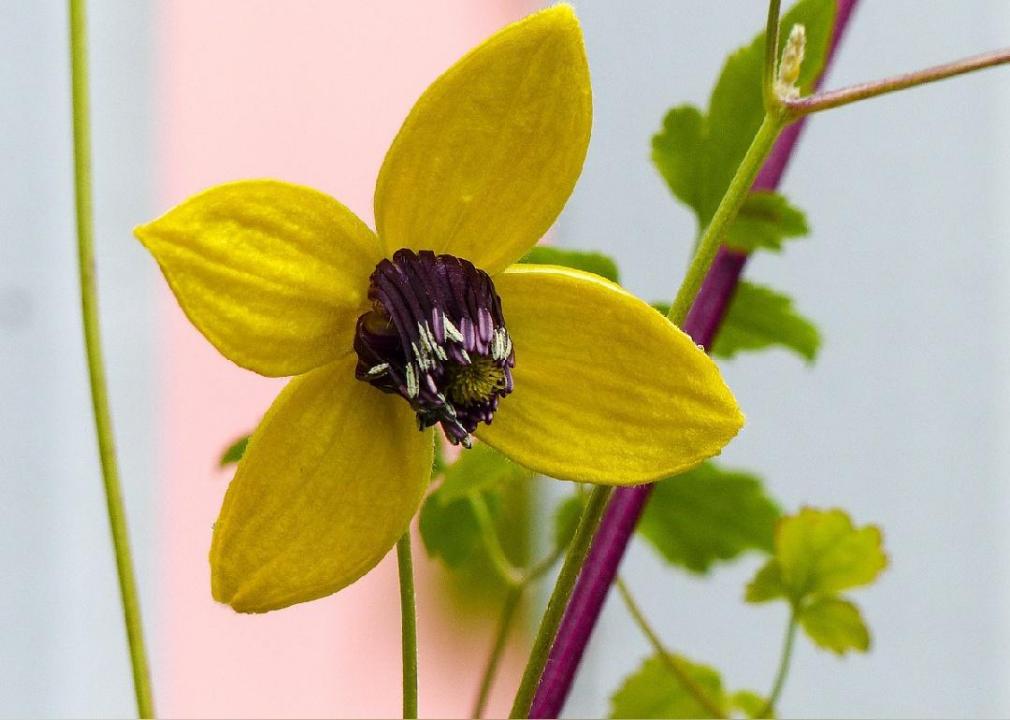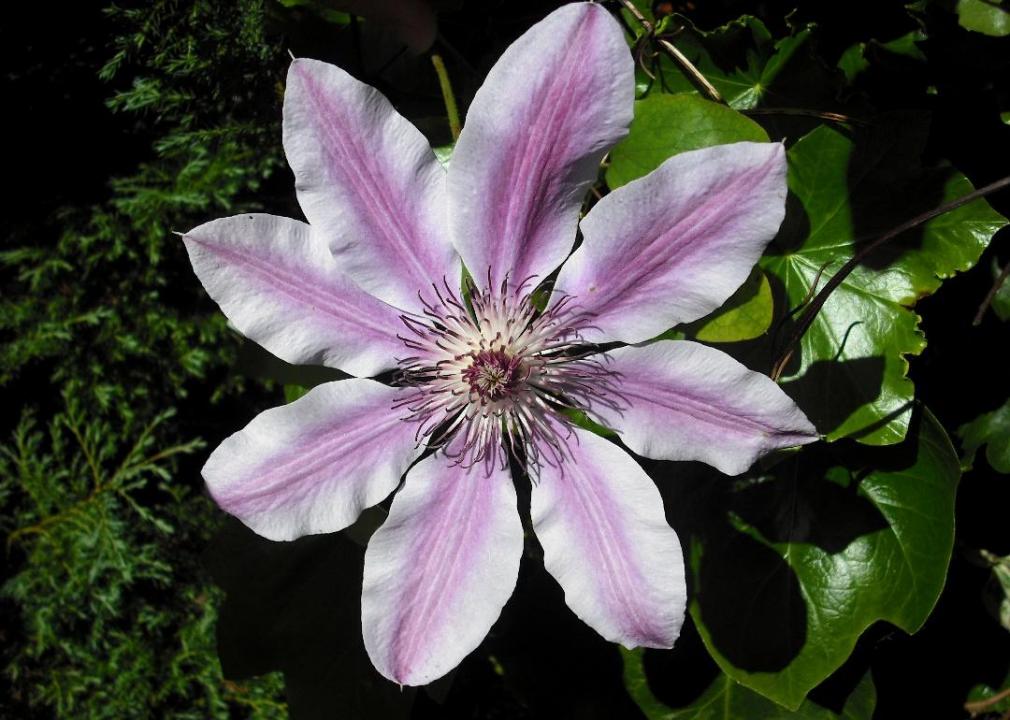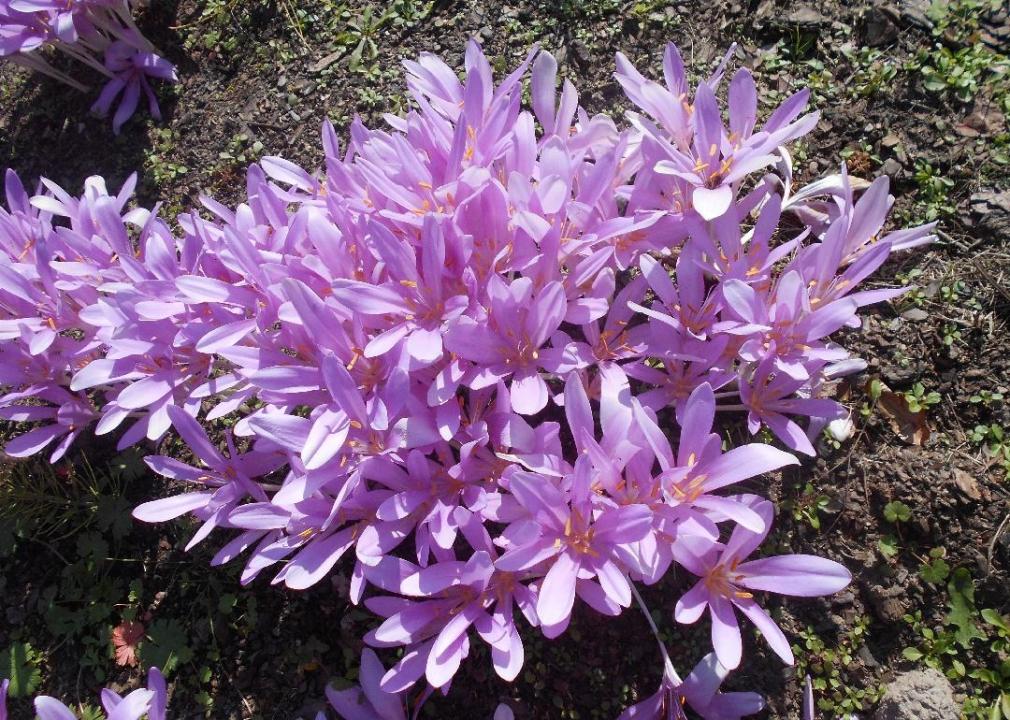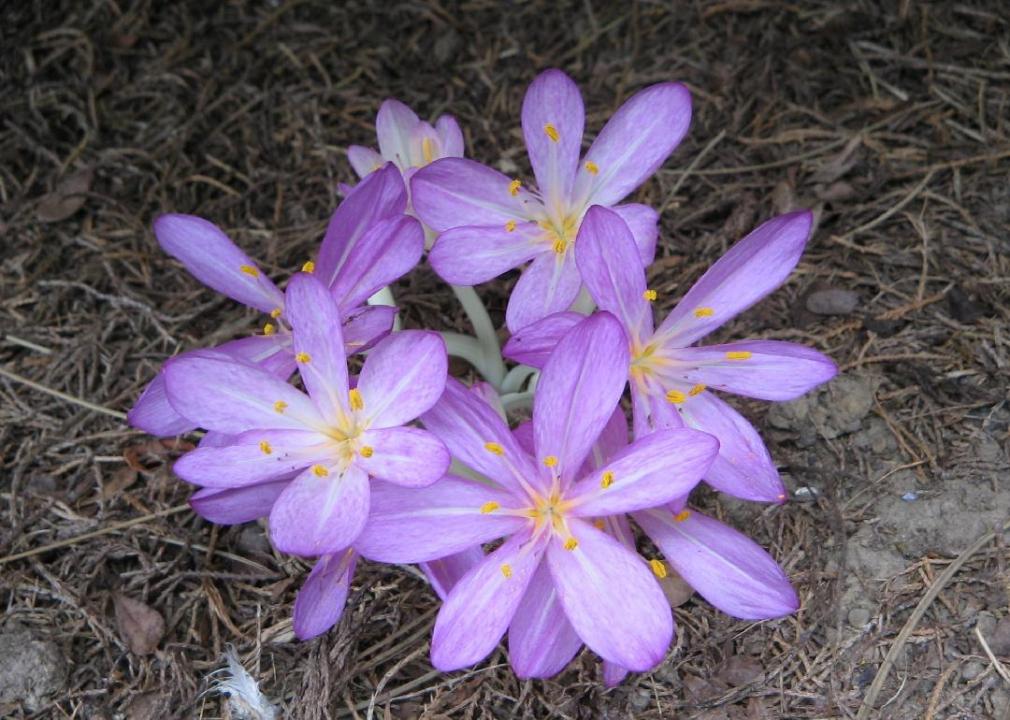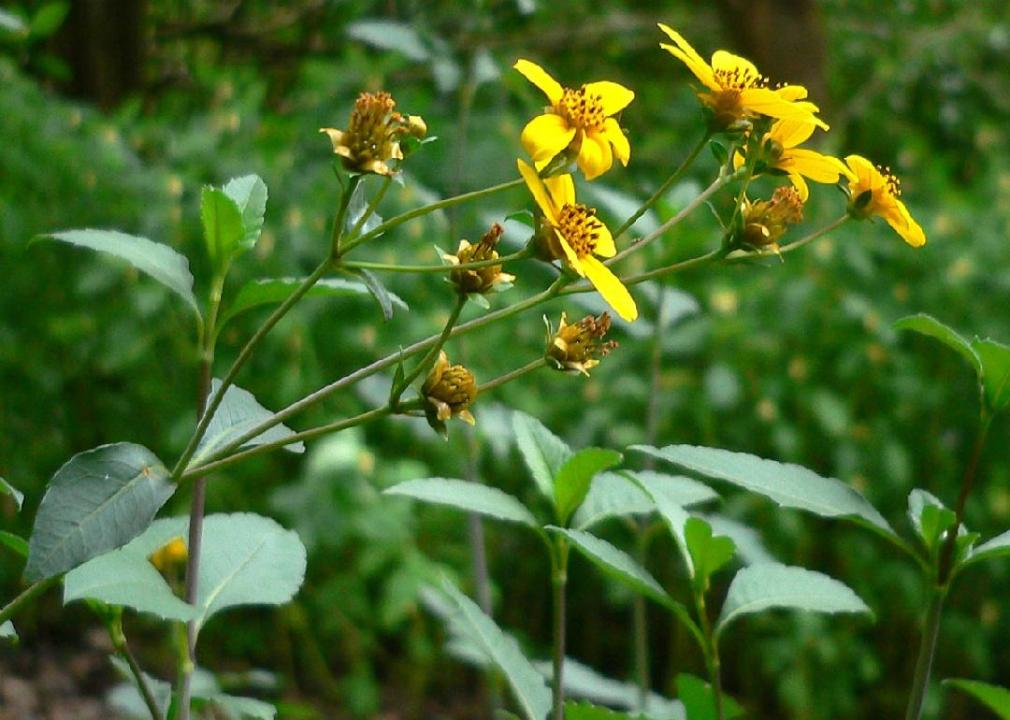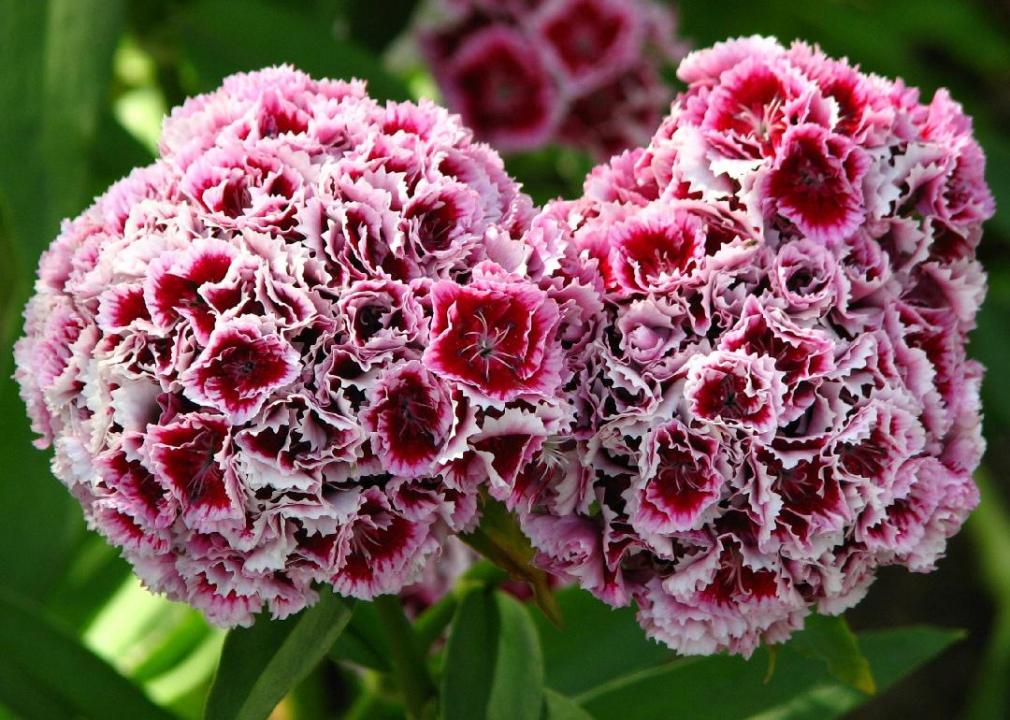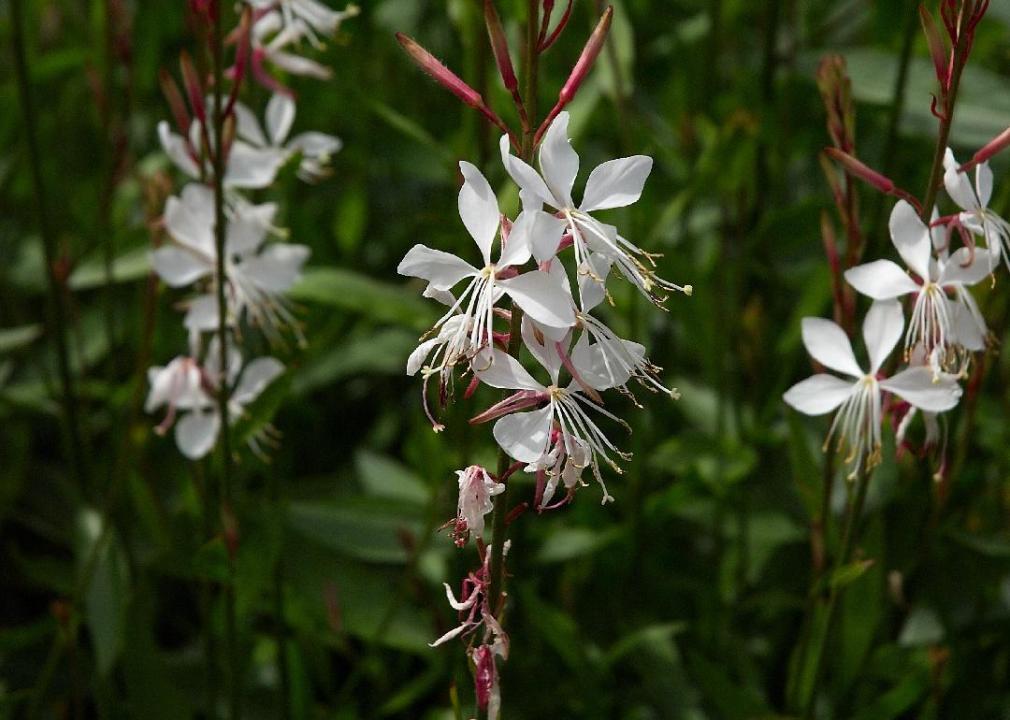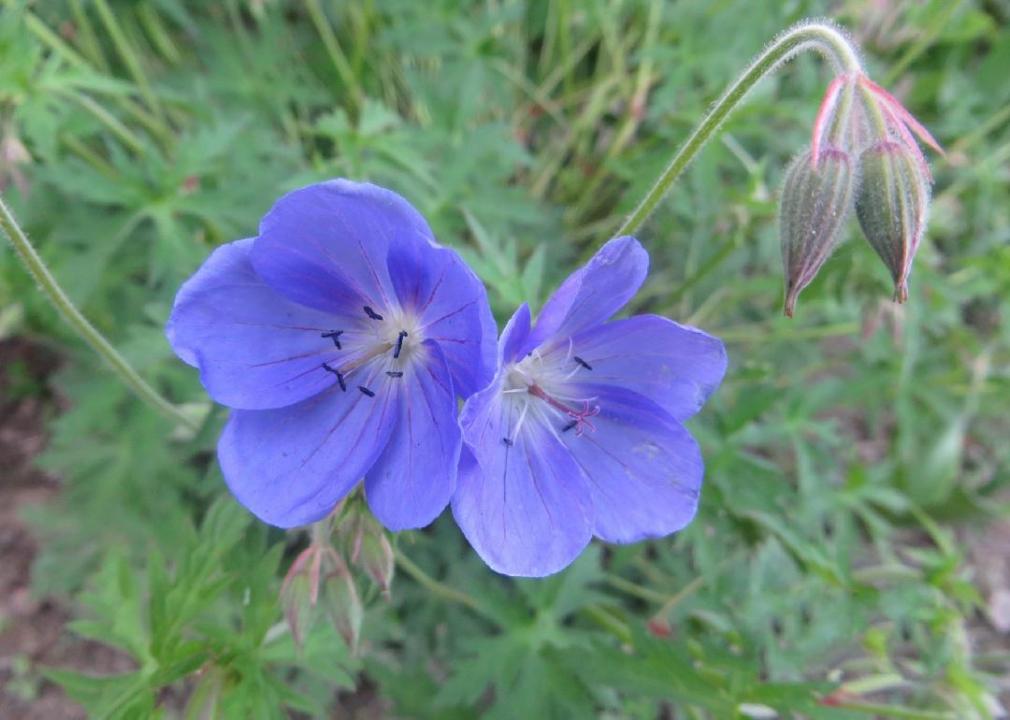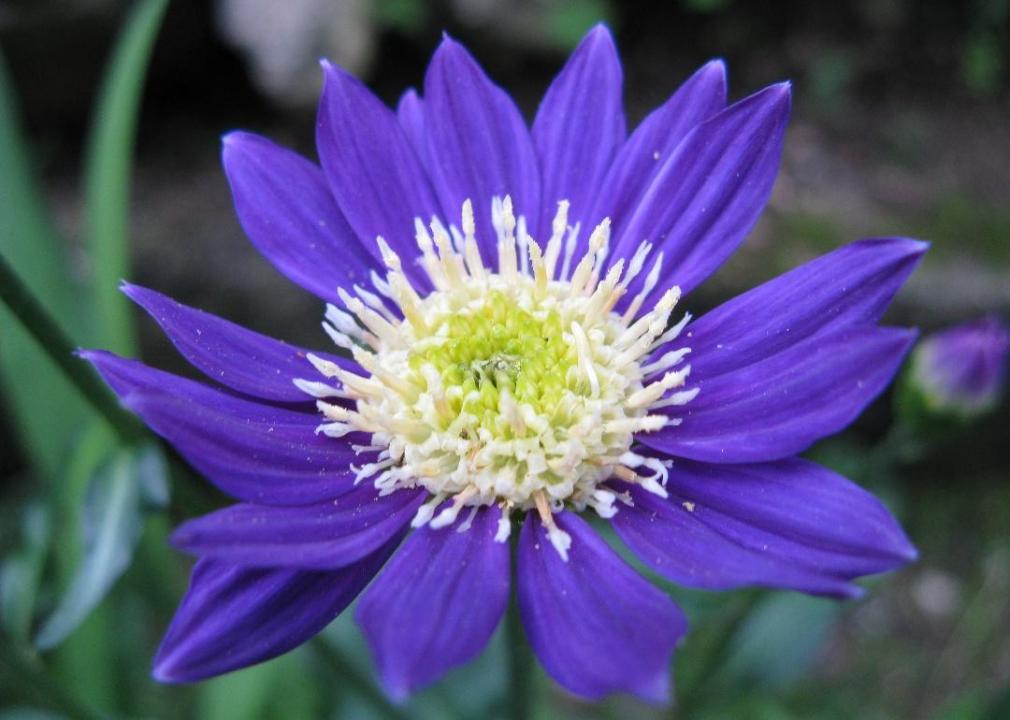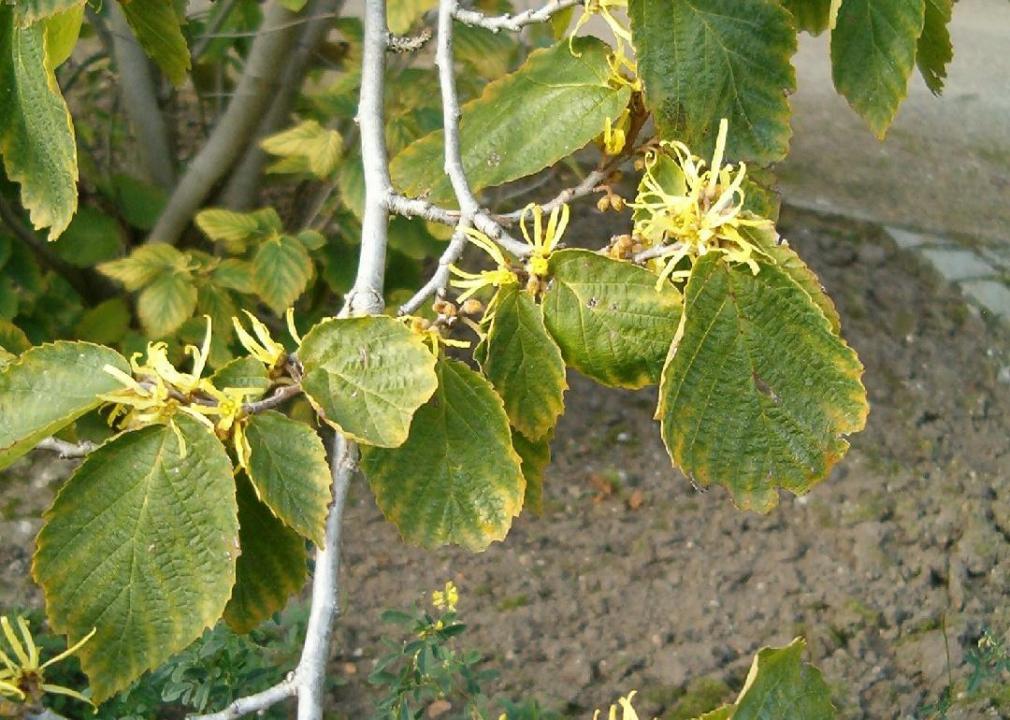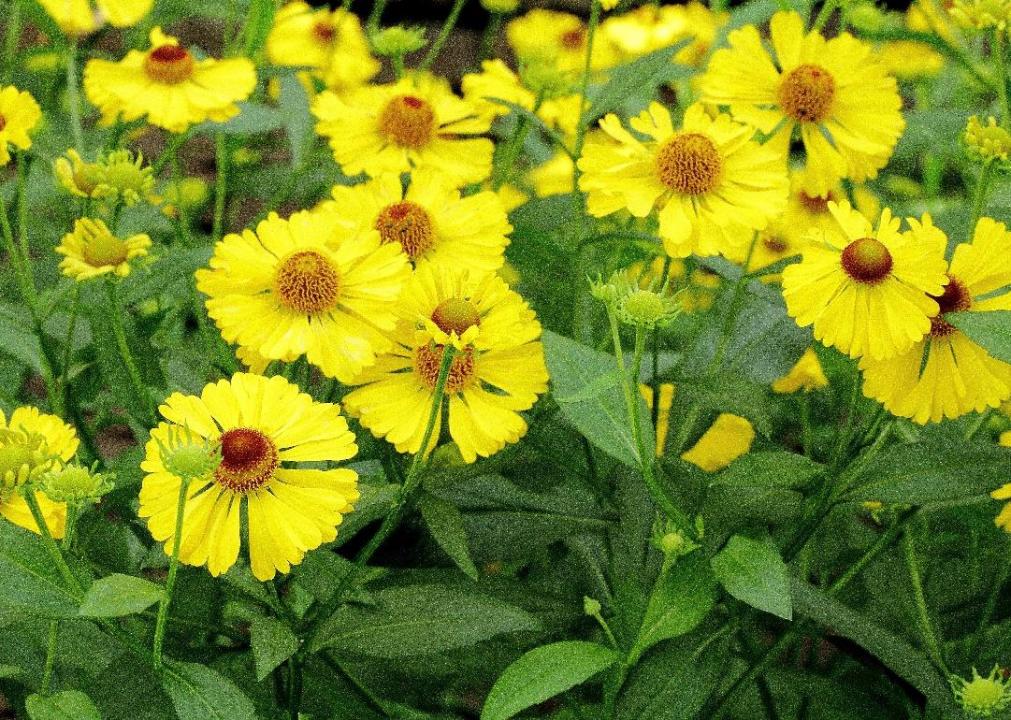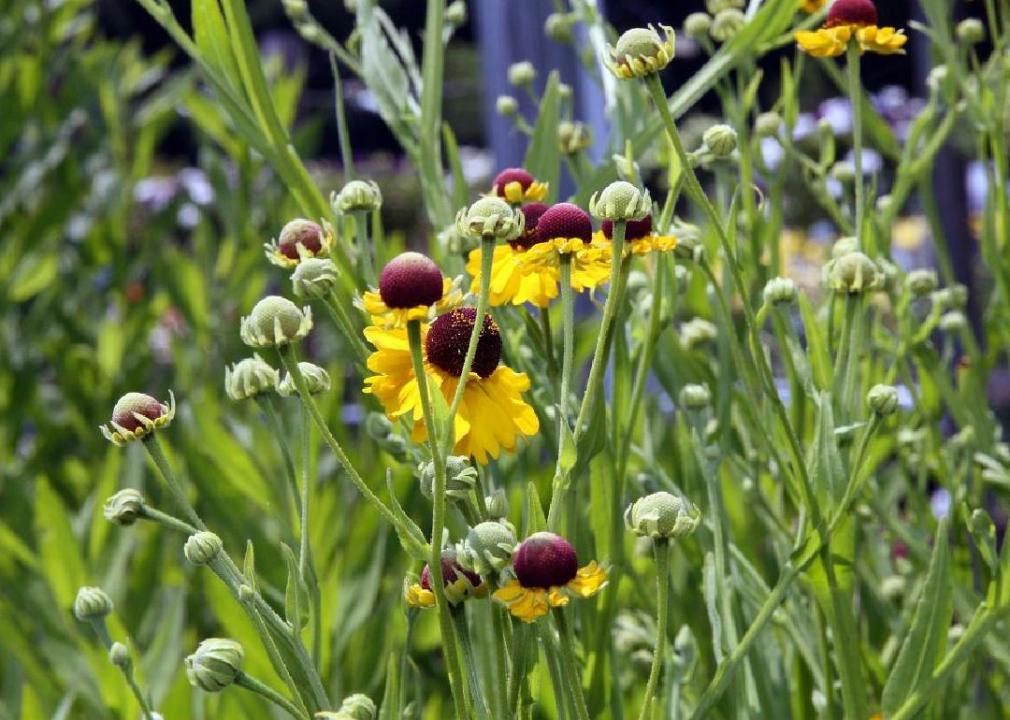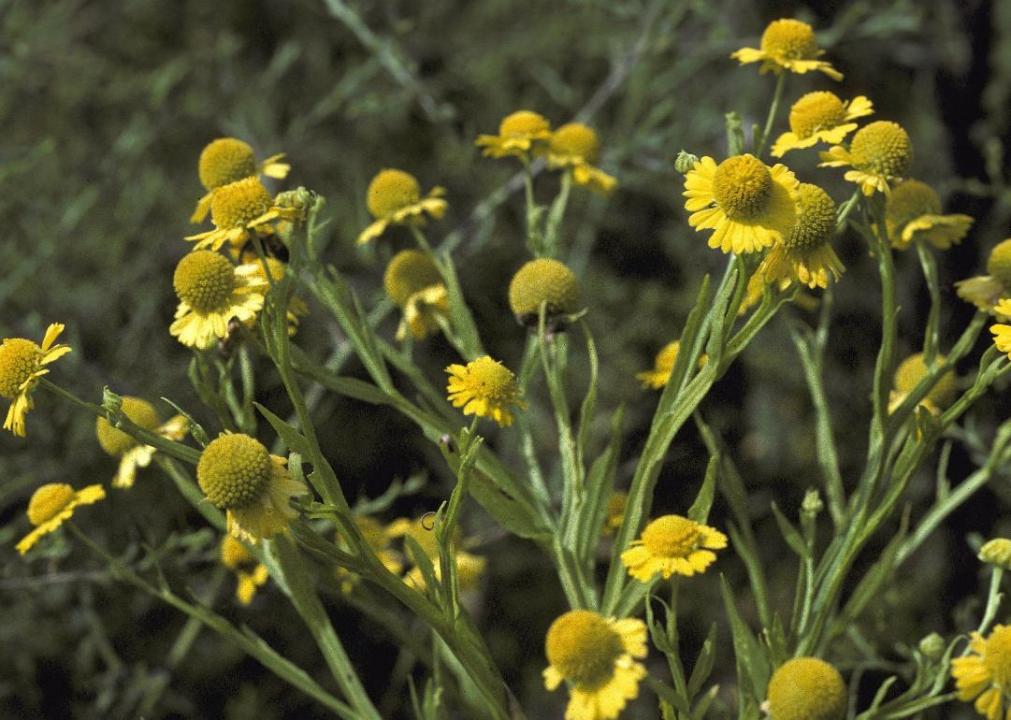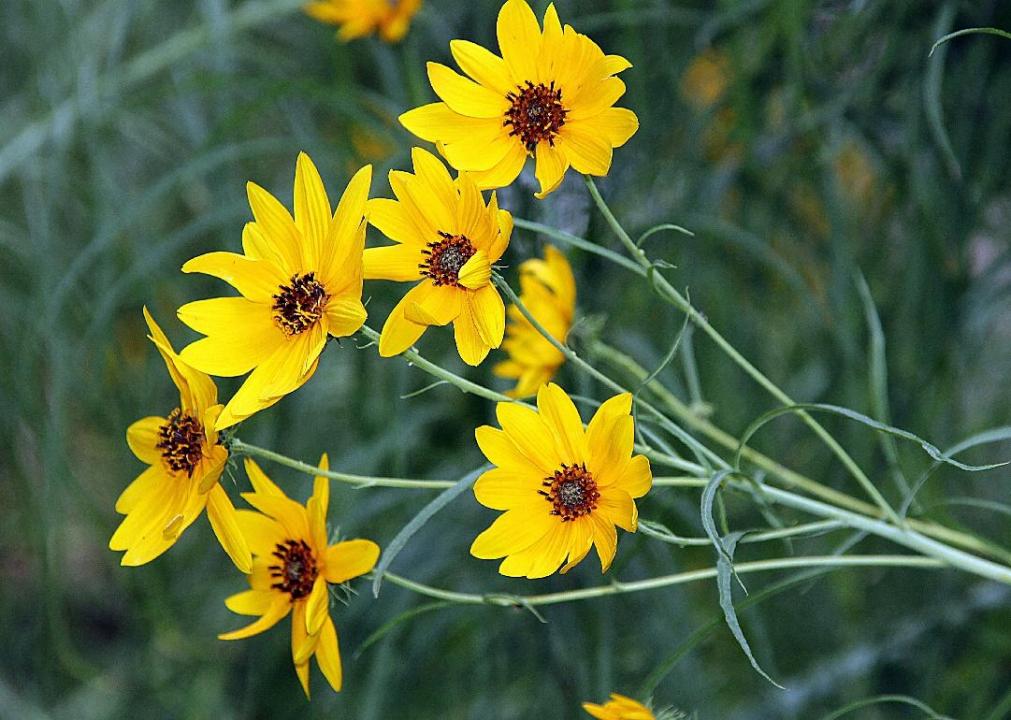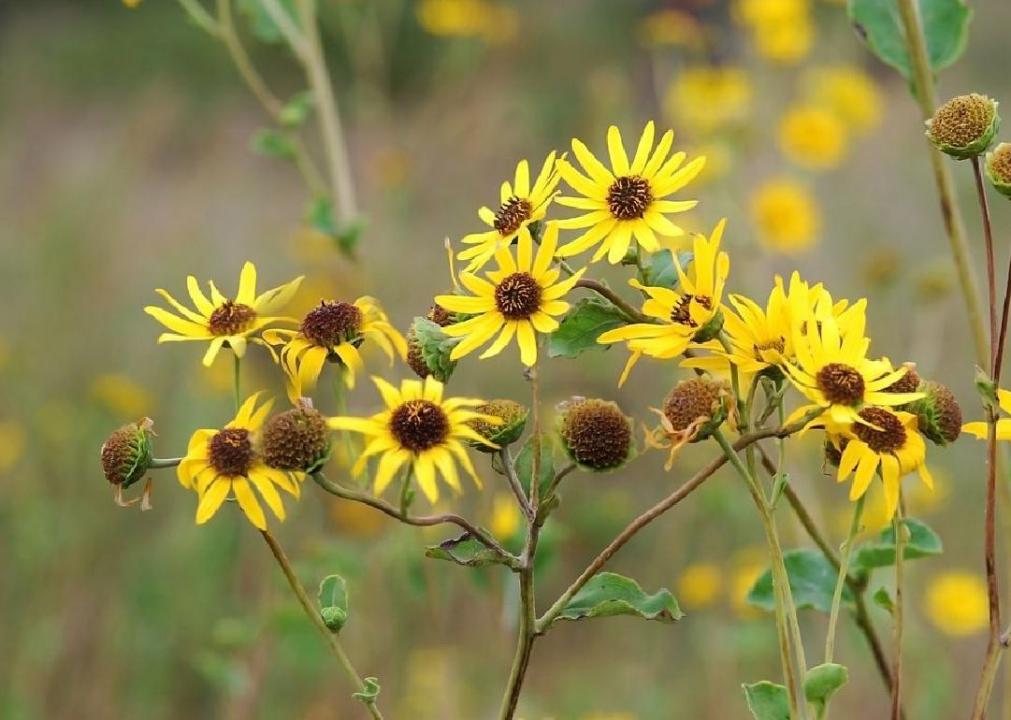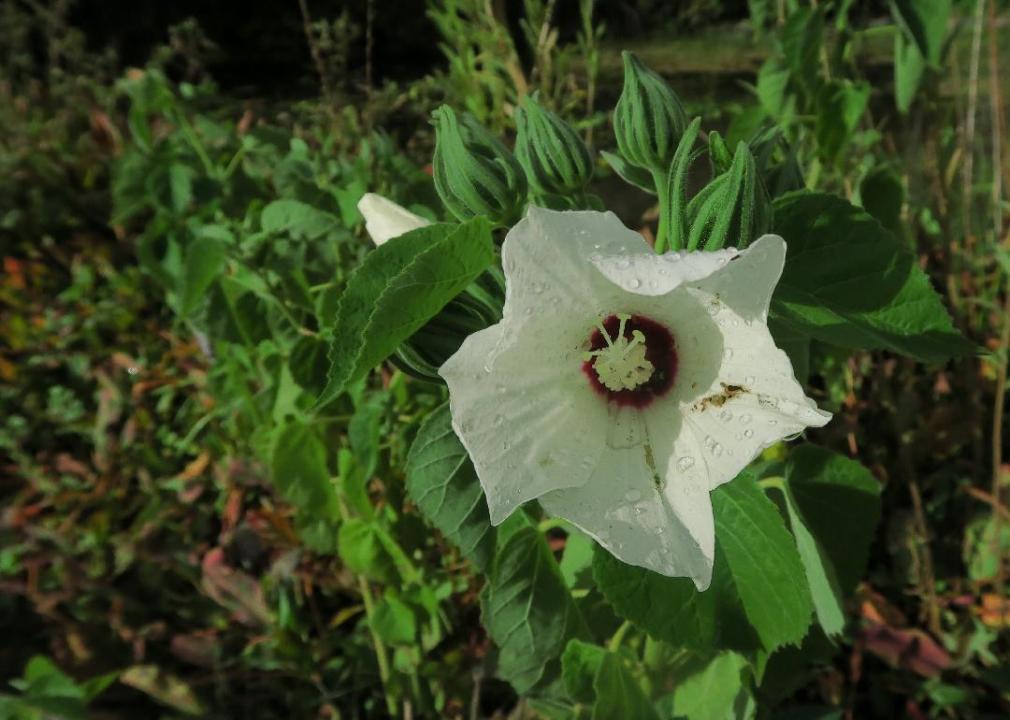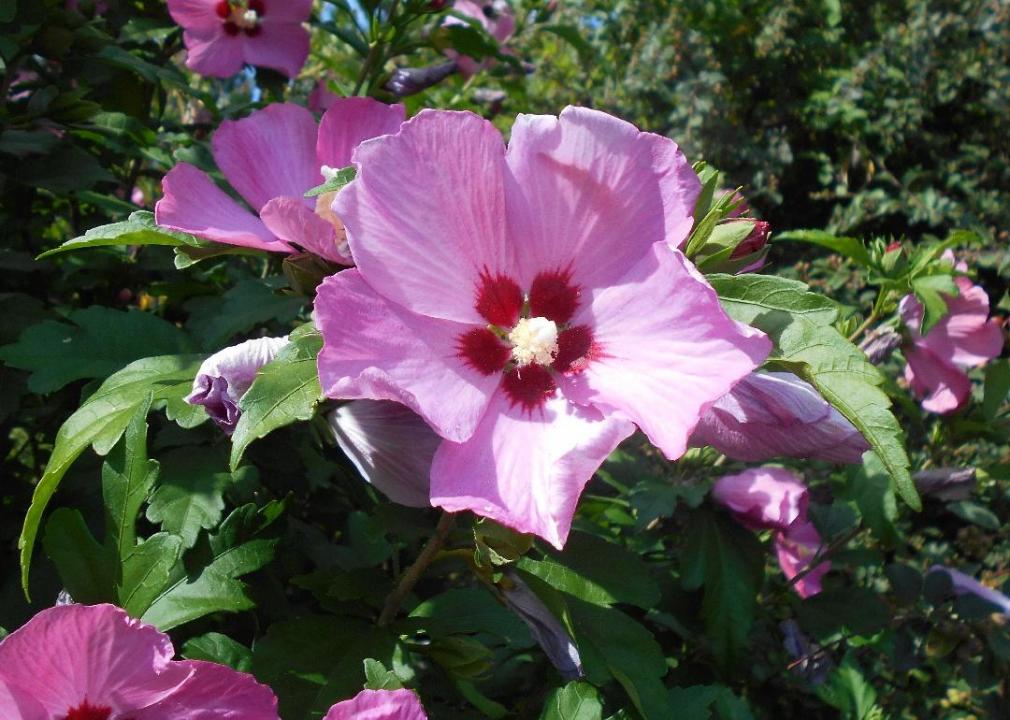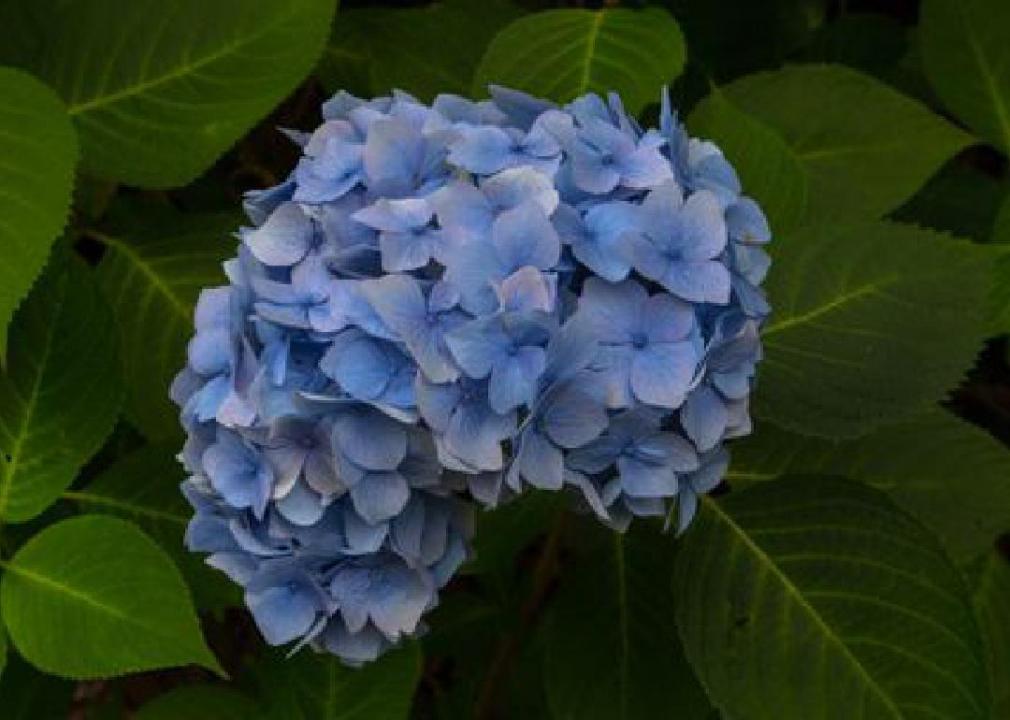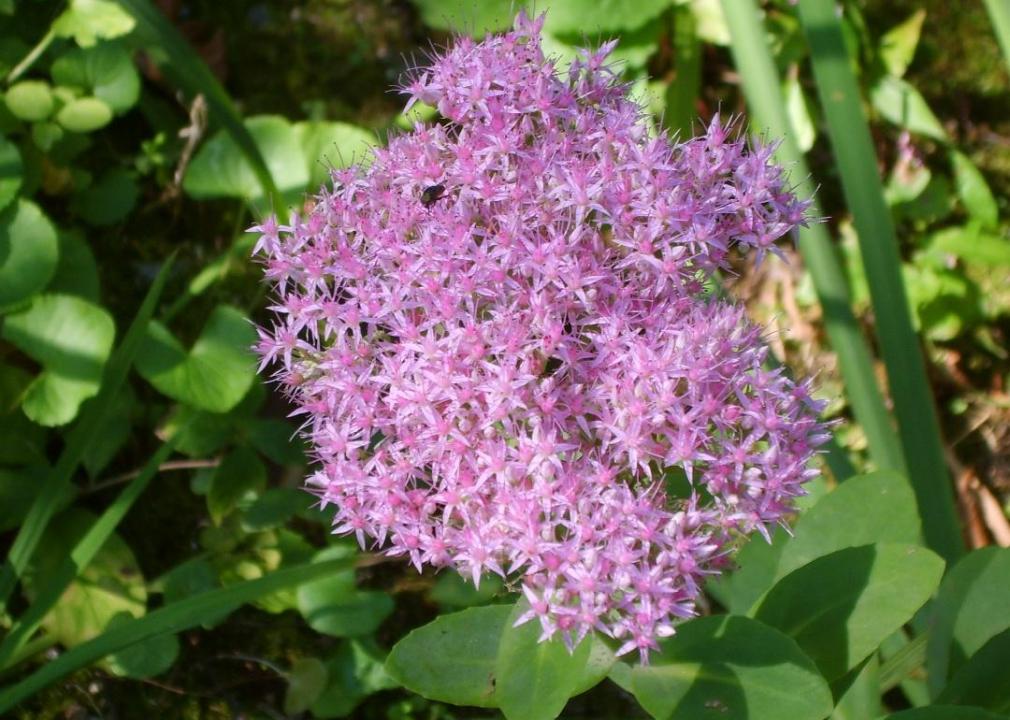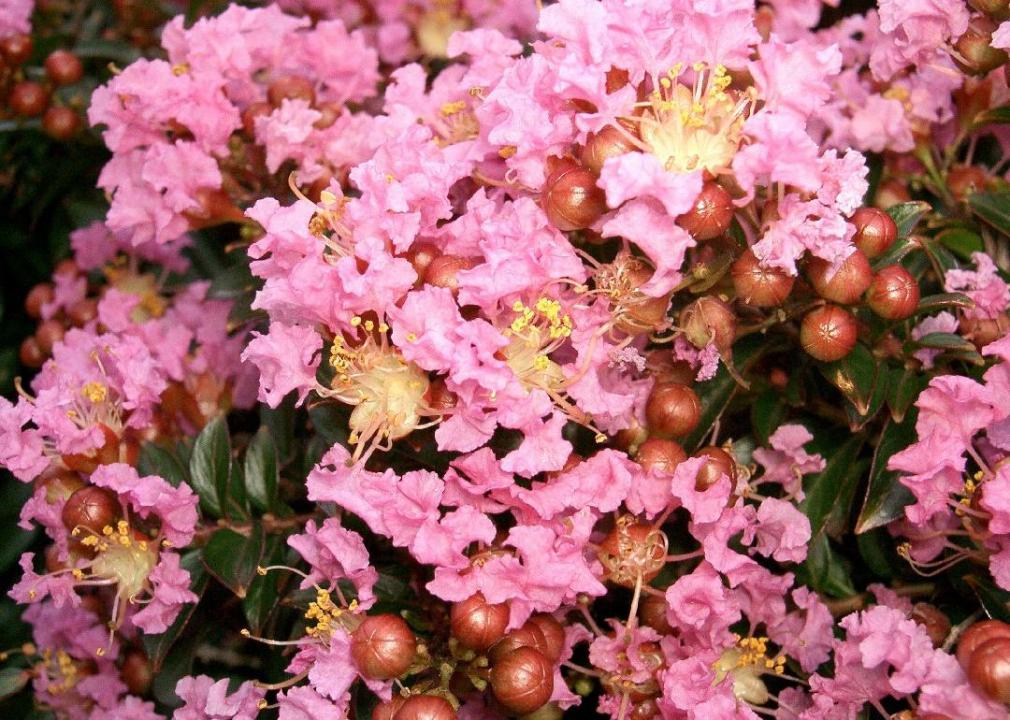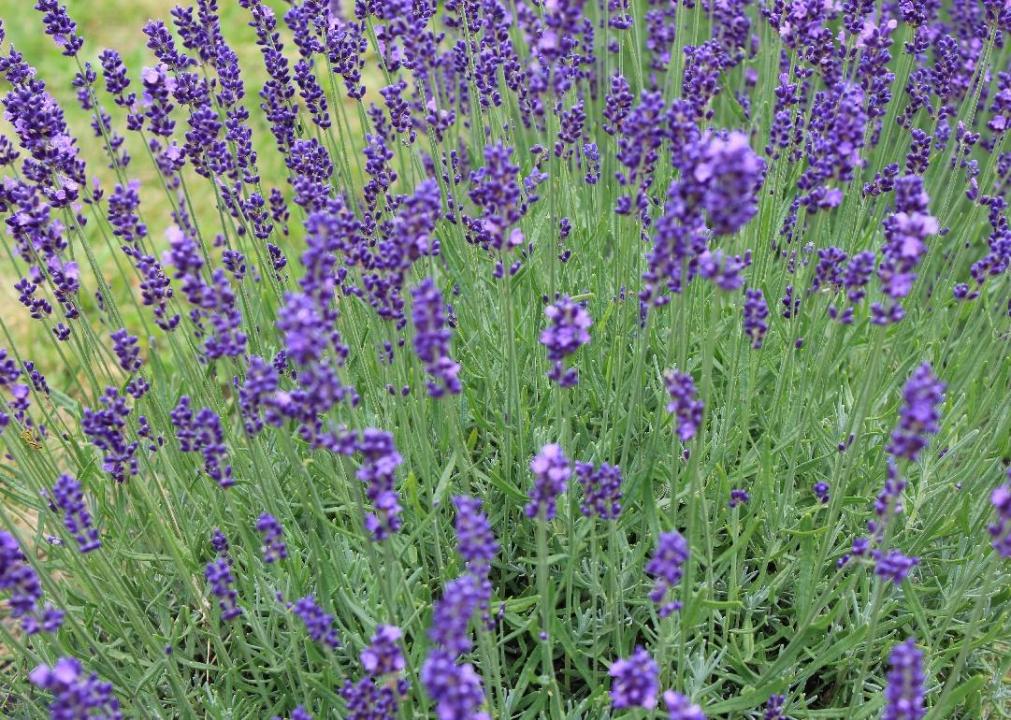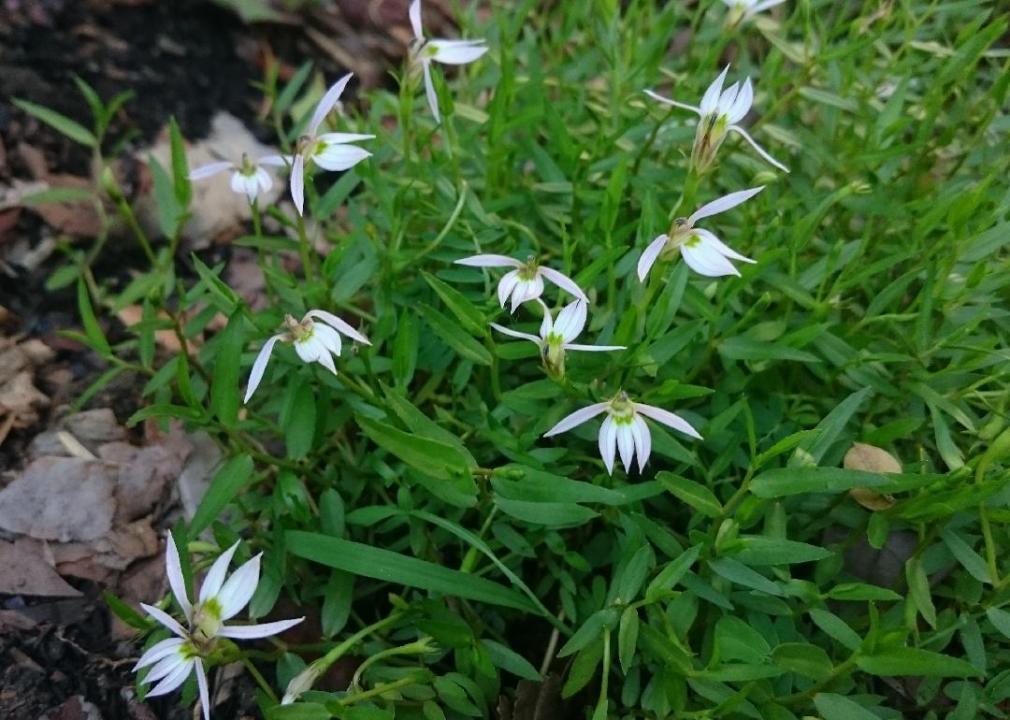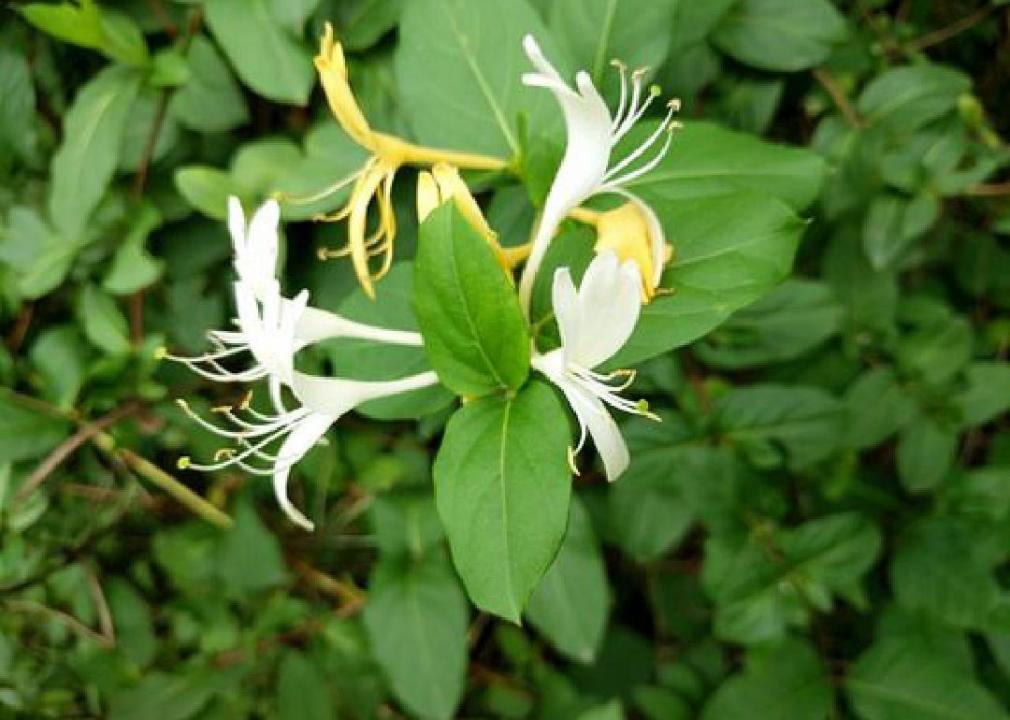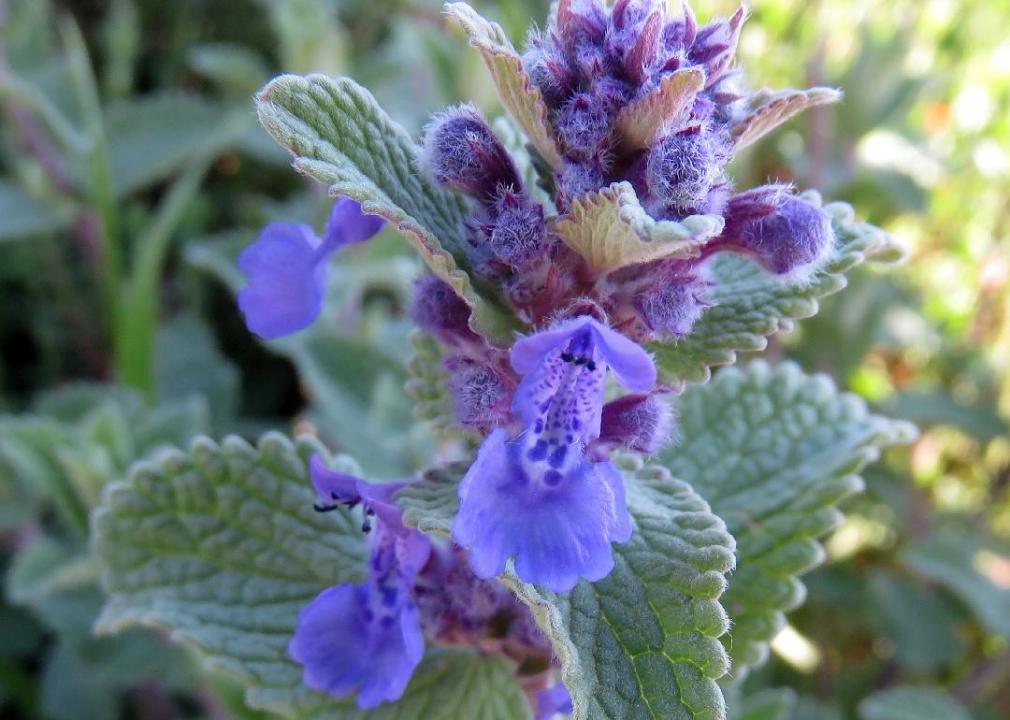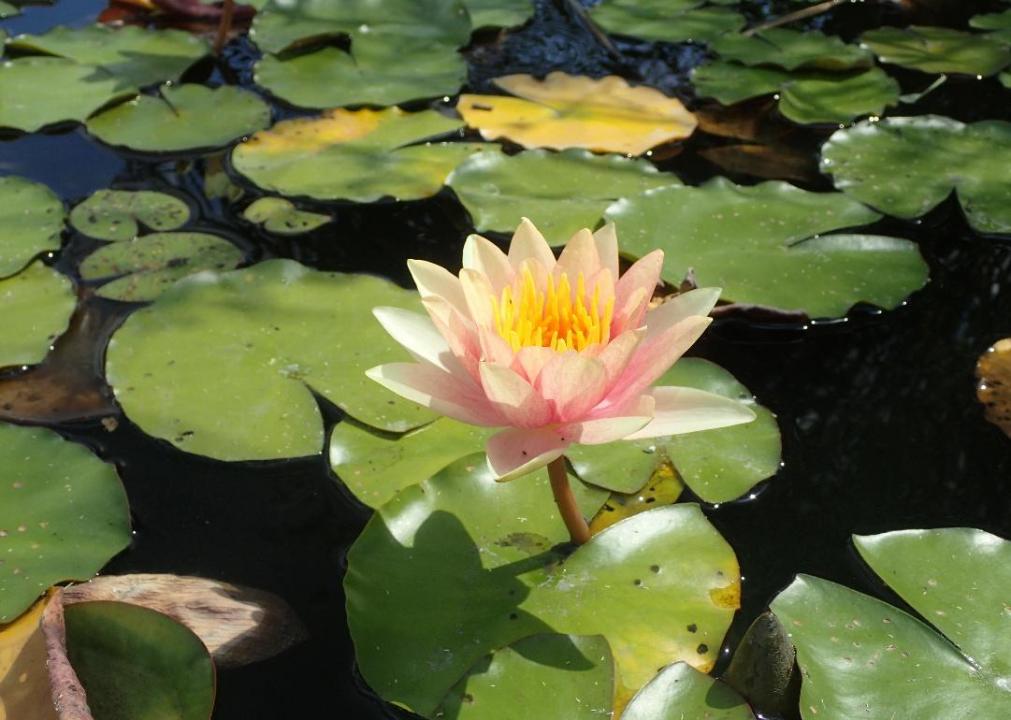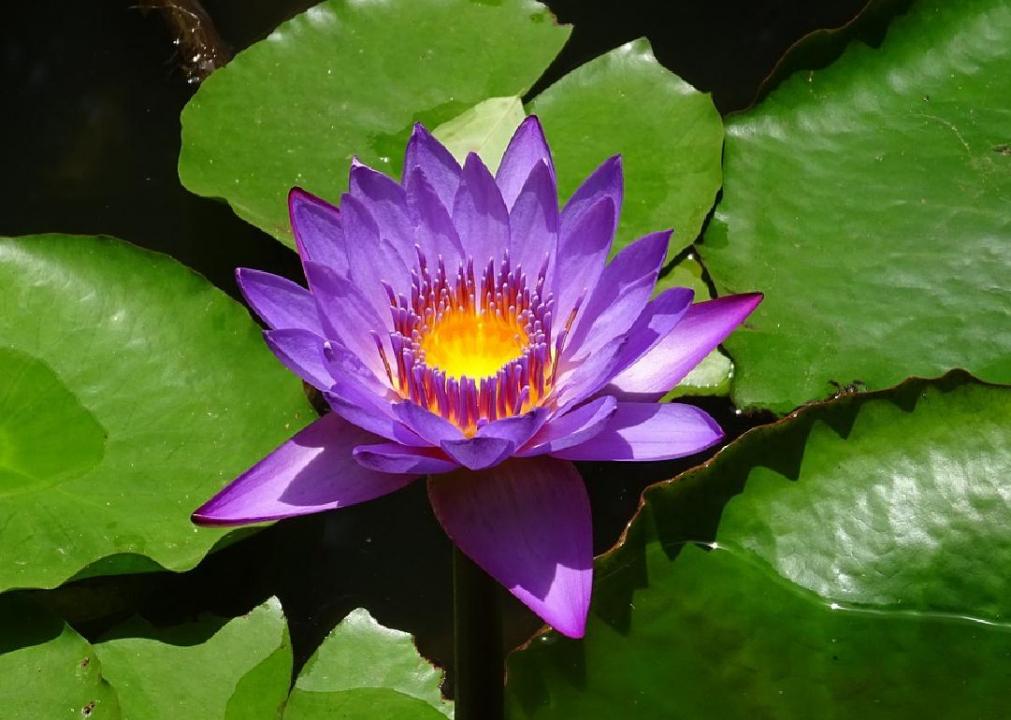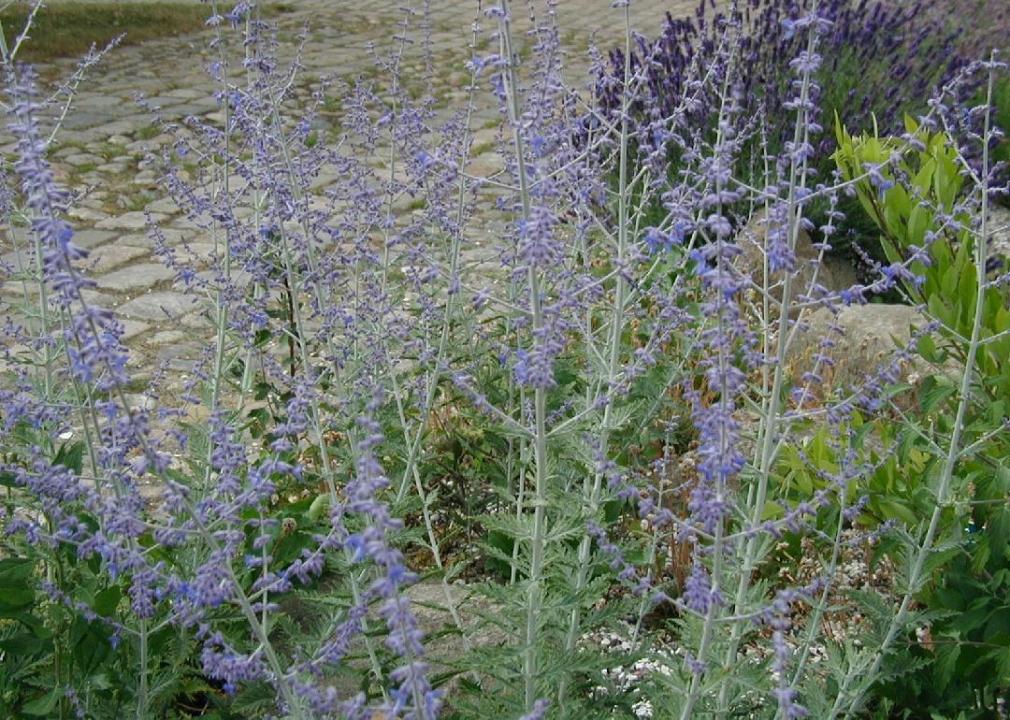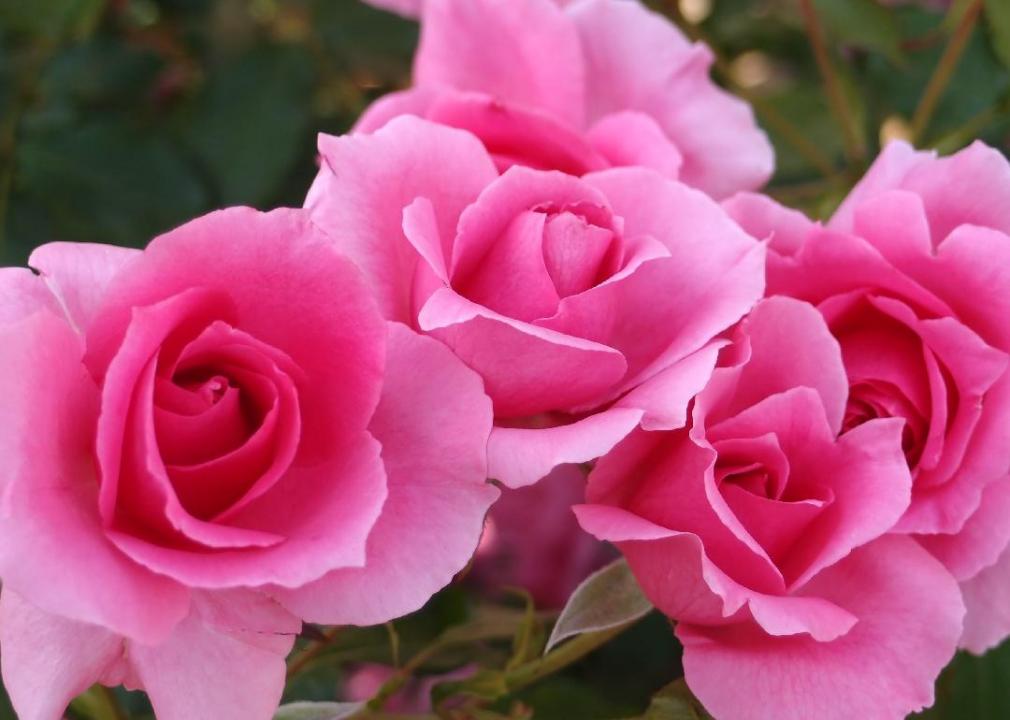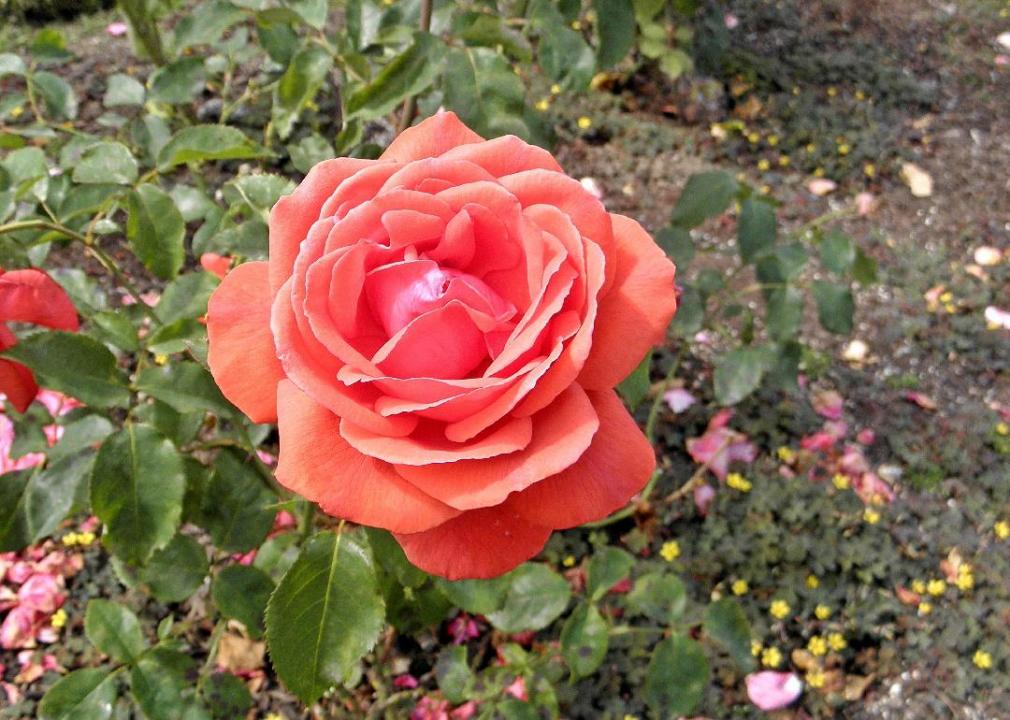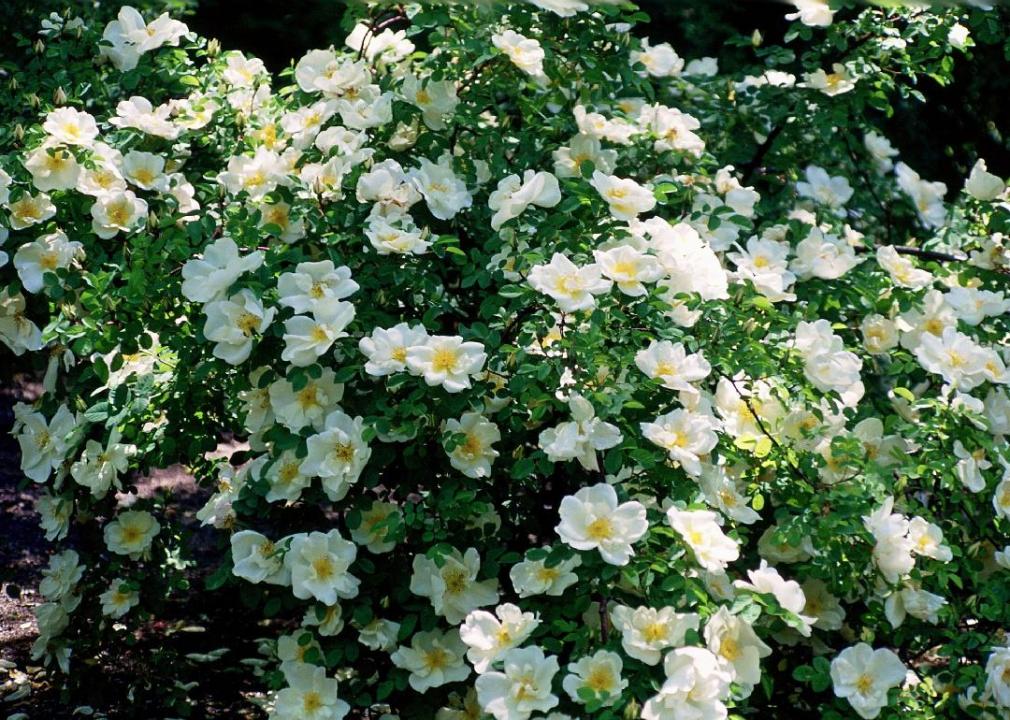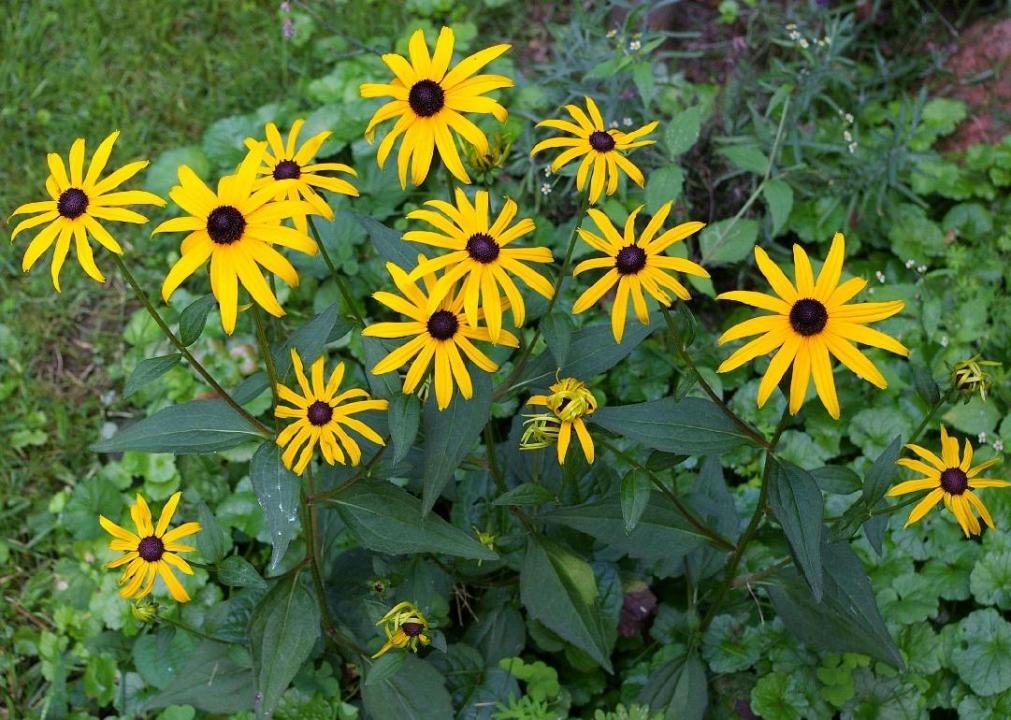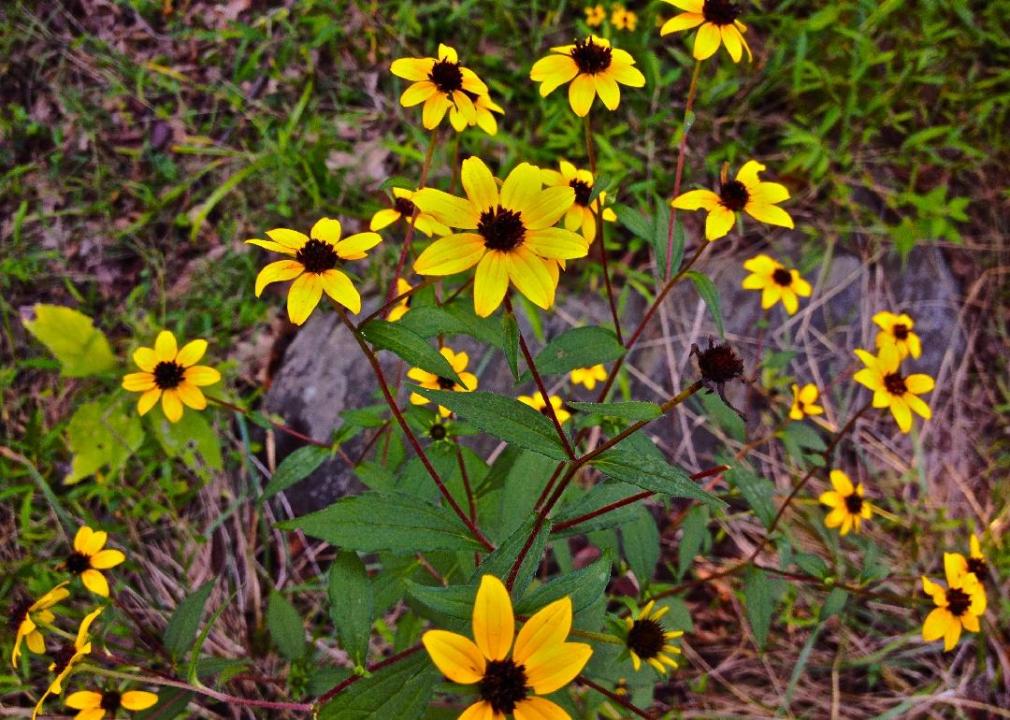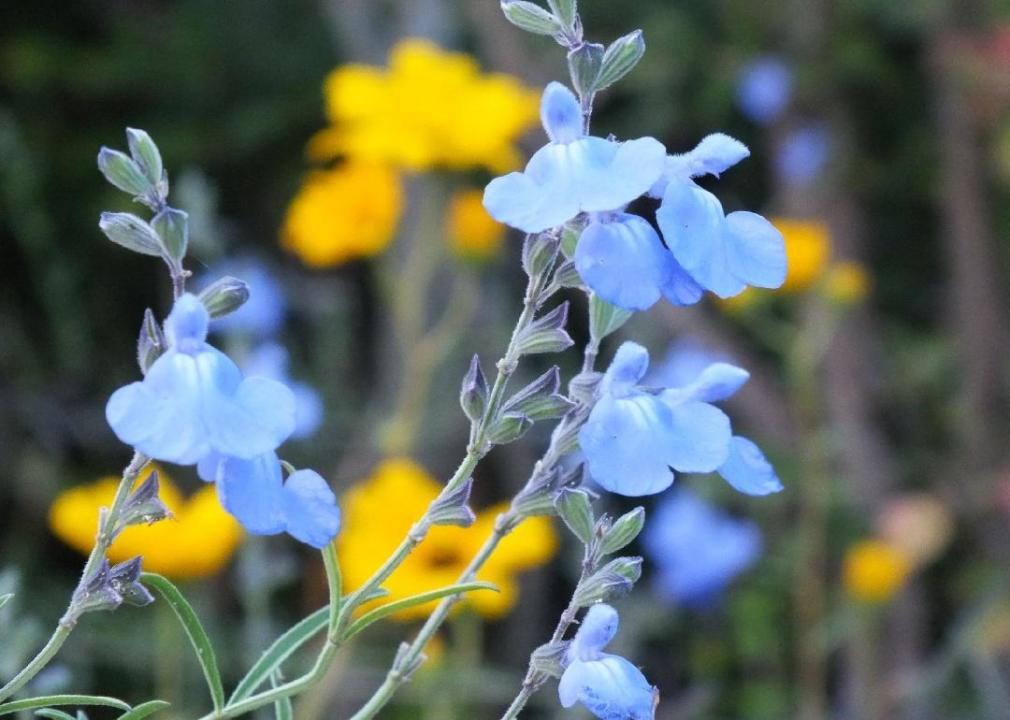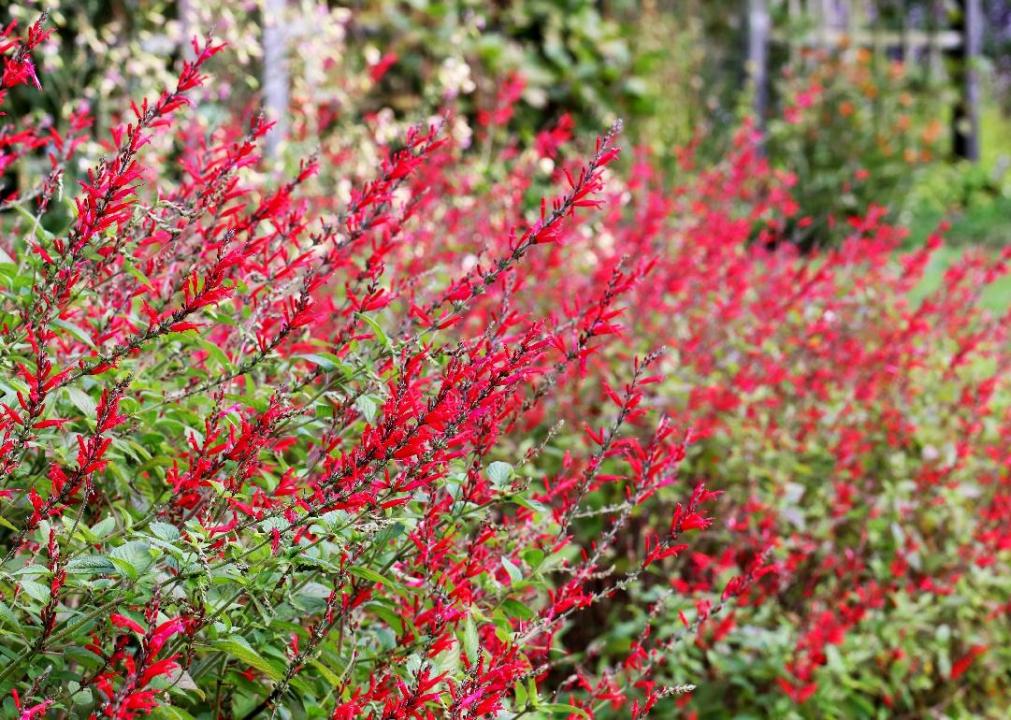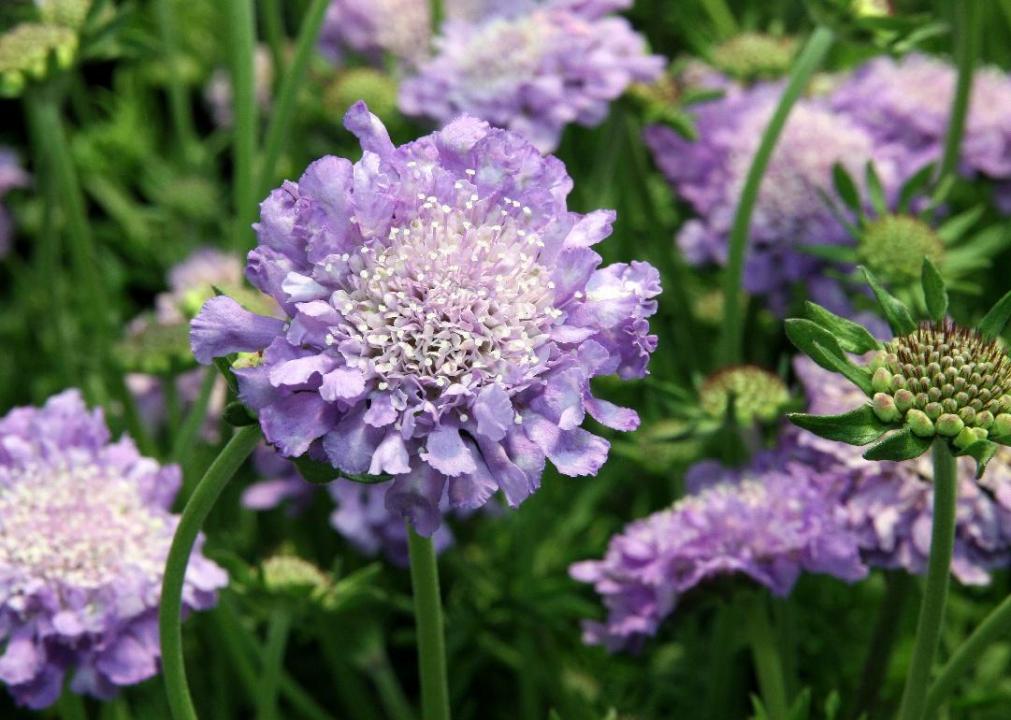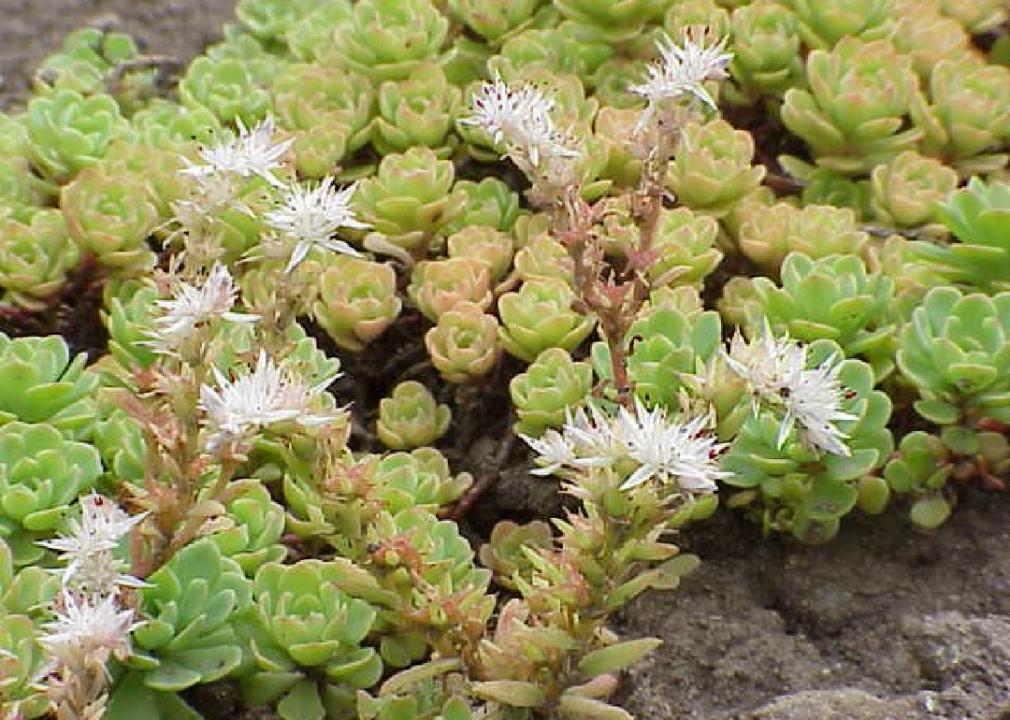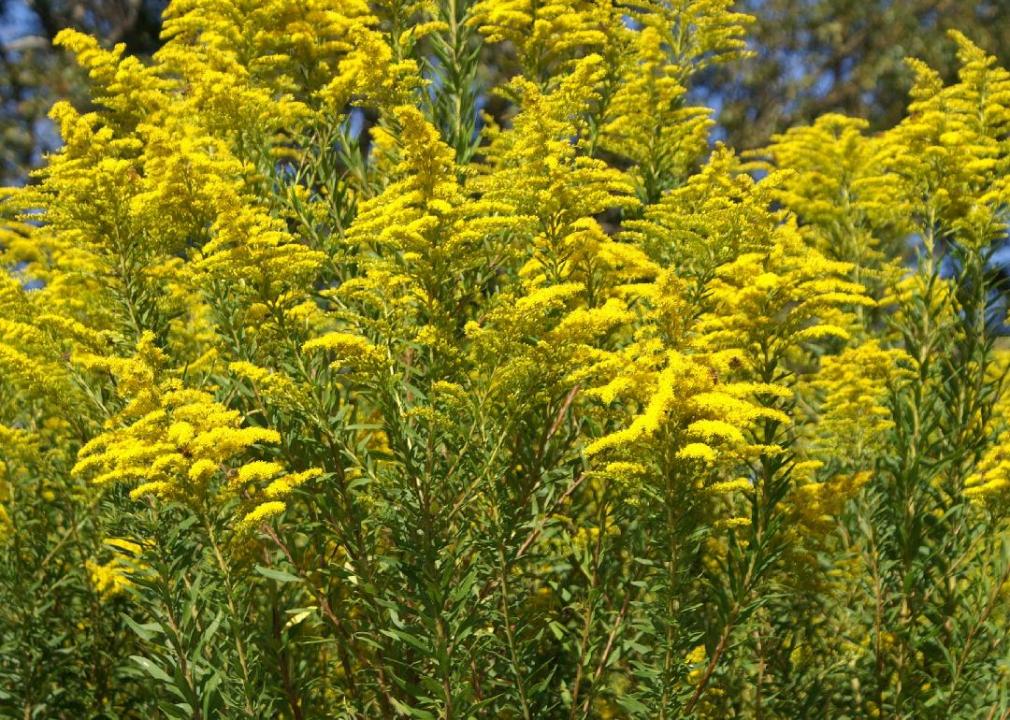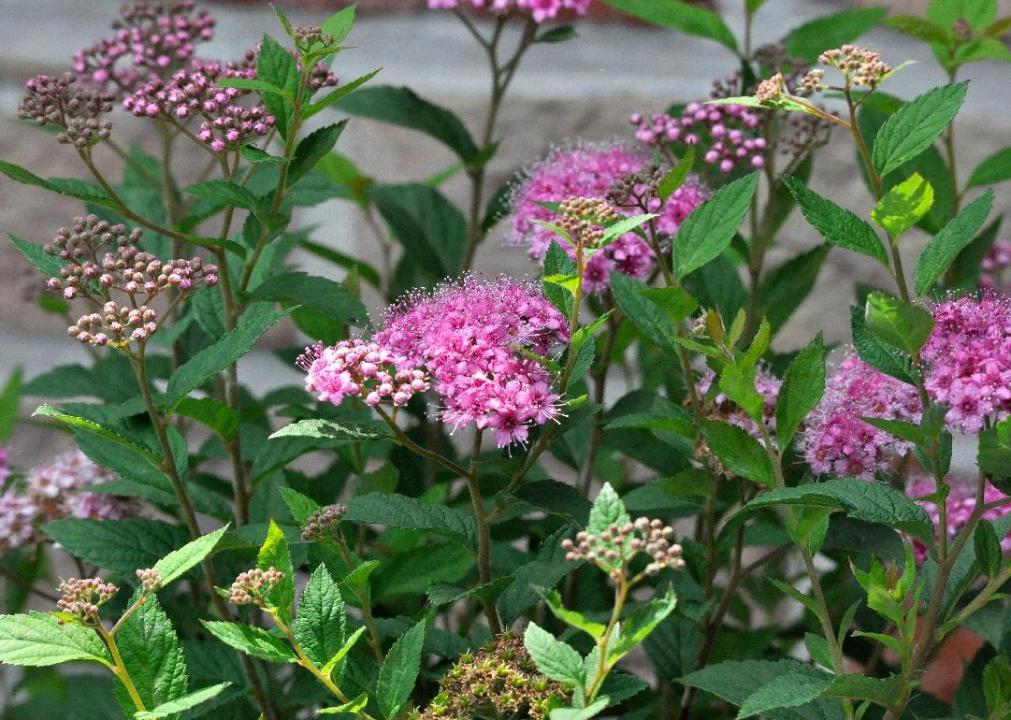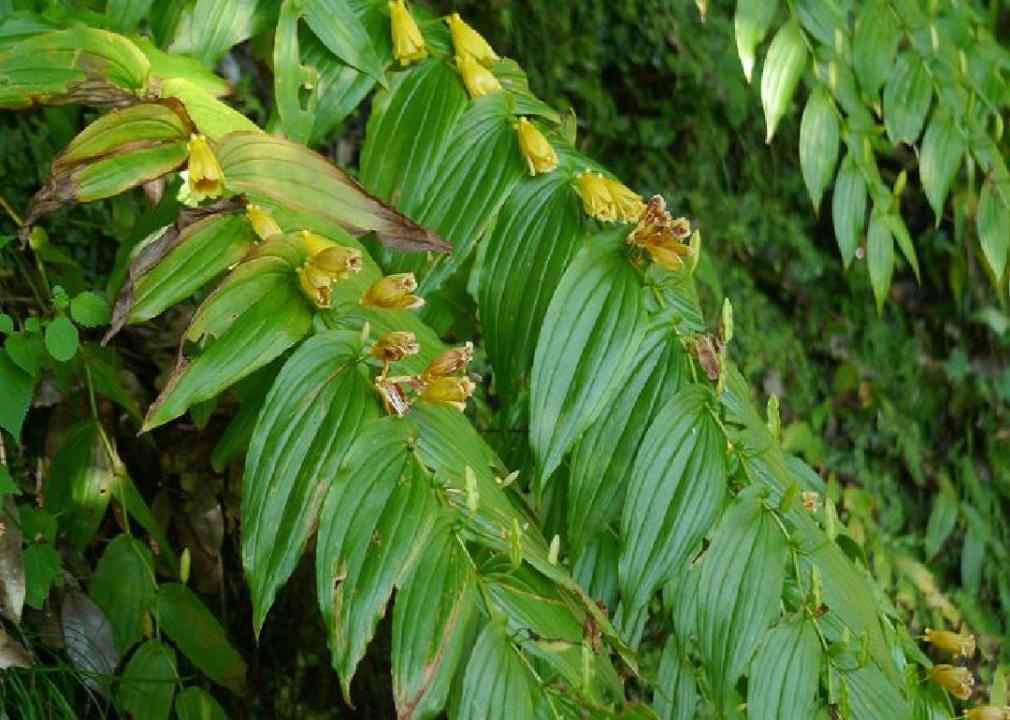50 fall flowers that bloom in October
Laslovarga // Wikimedia Commons
50 fall flowers that bloom in October
When we enthuse about fall color, it’s usually in reference to the changing colors of leaves. It’s spring and summer that are supposed to be about flowers. But October is a time of glorious beauty for many plants, from wildflowers that naturally bloom in autumn to cultivars of garden favorites that have been selected to flower until the first frost.
Along with low-maintenance native wildflowers, there are classic garden plants like roses and Sweet William. Flowers like turtlehead and Brown-eyed Susan are North American natives that bloom in this season, as do exotic transplants that have become common and familiar, like the Rose of Sharon. (A few of the latter that can be invasive and should be planted with care are noted.)
October flowers can be found on plants that range in size, shape, and growing habits: creeping or tall perennials, flowering shrubs, and even some like crape myrtle that can be grown as trees in some locations. Fragrant choices include lavender, Russian sage, butterfly bush, and some fall-blooming roses.
Many of these plants are attractive to birds, including hummingbirds, and to bees and butterflies, providing a haven for native wildlife and pollinators, as well as beauty. Some are resistant to the problems that wildlife can present to gardeners, in that they are unappetizing to deer and rabbits.
Stacker compiled 50 flowers that bloom in October, arranged in alphabetical order by scientific name. Bloom times included are based on the 2018 Missouri Botanical Garden’s bloom times resource.
You may also like: 47 plants that begin to bloom in March
![]()
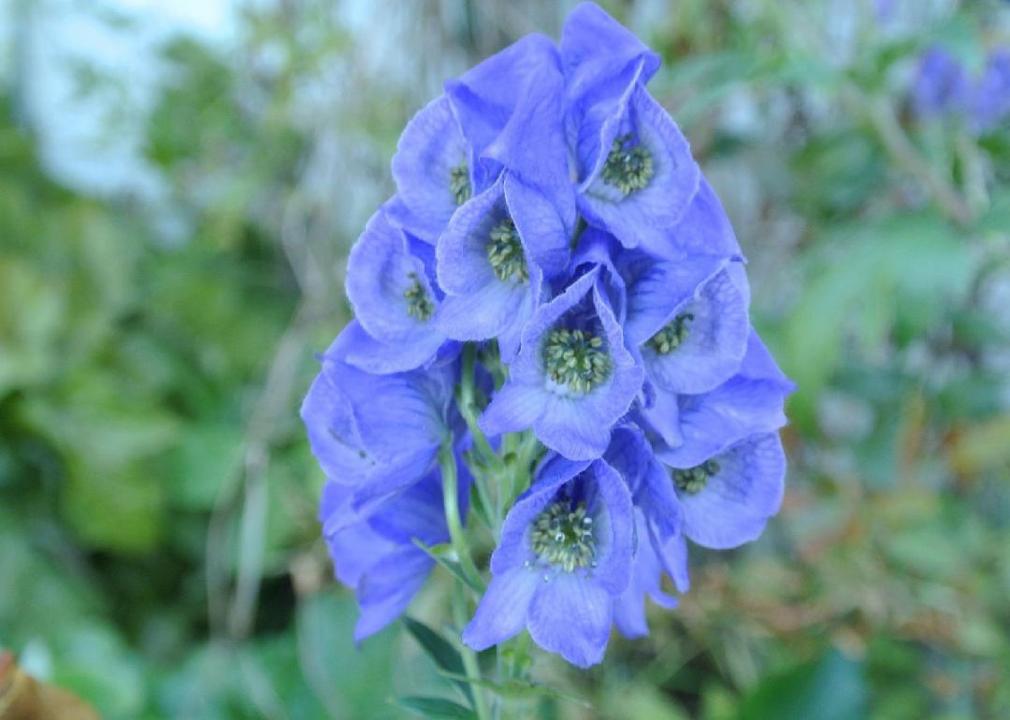
James Steakley // WIkimedia Commons
Azure monkshood
– Scientific name: Aconitum carmichaelii ‘Arendsii’
– Bloom period: September to October
This late-flowering variety of monkshood, like its relatives, is named after the shape of its flower, which resembles the headwear of a medieval monk. Relatively trouble free as far as problems with pests or disease, it does have one feature to be careful of: All parts of the plant are poisonous. It’s essential to wear gloves and cover any wounds or abrasions before working with it and avoid planting near vegetable gardens or in areas frequented by children or pets.
Böhringer Friedrich // Wikimedia Commons
Japanese anemone
– Scientific name: Anemone hupehensis var. japonica
– Bloom period: September to October
This member of the buttercup family is native to China, but was cultivated in Japan for so long that it naturalized and was mistaken for a native. It prefers moist but well-drained conditions, with soil that neither dries out completely nor gets soggy with standing water. It is slow to establish, but will spread and form colonies over time.
David J. Stang // Wikimedia Commons
Tatarian aster
– Scientific name: Aster tataricus ‘Jindai’
– Bloom period: September to October
This tall, late-blooming purple aster looks good all the way up to the first frost. The “jindai” variety was first discovered at the Jindai Botanical Garden in suburban Tokyo. While some asters get leggy and need pruning in the summer to look their best, this one does well without it as long as it’s grown in full sun.
Ptelea // Wikimedia Commons
Butterfly bush (B. ‘Lochinch’)
– Scientific name: Buddleja ‘Lochinch‘
– Bloom period: August to October
The butterfly bush, as it name suggests, is attractive to butterflies and other pollinators. This hybrid variety has lilac blue blossoms that make good cut flowers. It looks better planted in groupings than as a single specimen and is less winter hardy than its relatives, recommended only for USDA zones 6-9.
You may also like: How communities are dealing with invasive species across the U.S.
Ptelea // Wikimedia Commons
Butterfly bush (B. weyeriana)
– Scientific name: Buddleja × weyeriana ‘Honeycomb’
– Bloom period: June to October
This variety of the butterfly bush has fragrant yellow flowers with orange eyes that, yes, are attractive to butterflies. It does poorly with less than full sun or in wet conditions, and as another variety that can’t tolerate harsh winters, is recommended only for USDA zones 6-9. It may die back to the ground in the colder parts of its range but that’s just as well, since it is more attractive when pruned back to the ground in late winter.
Dalgial // Wikimedia Commons
Bluebeard
– Scientific name: Caryopteris incana ‘Blue Myth’
– Bloom period: September to October
This flowering shrub has fragrant dark blue blossoms that lure butterflies and pollinators. It’s particularly attractive when planted in groups or as a low hedge and benefits from hard pruning, which can be done in early spring since it flowers on new growth. The genus name refers to its winged fruits: In Greek, karyon means “nut” and pteron, “wing.”
Mason Brock // Wikimedia Commons
White turtlehead
– Scientific name: Chelone glabra
– Bloom period: August to October
This native wildflower is found in most of the east of North America. It requires a moist environment with rich soil and is good for woodland and bog gardens and for edging ponds and streams. The name comes from the shape of the white flowers, which resemble a turtle’s head.
David J. Stang // Wikimedia Commons
Golden aster
– Scientific name: Chrysopsis mariana
– Bloom period: August to October
This aster is a native of the southeastern United States—the second part of its Latin name, mariana, means it’s from Maryland. In nature, it grows in all kinds of open, sunny areas, such as meadows and roadsides, especially where the soil is sandy. In the garden, it prefers well-drained soil, can tolerate a little shade, and can withstand drought once it’s well-established.
werner22brigitte // Needpix
Golden Cross clematis
– Scientific name: Clematis ‘Golden Cross’
– Bloom period: July to October
Clematis is a flowering vine that in the garden is typically trained to climb up a structure such a trellis, arbor, or fence. It prefers to grow where the vines are in full sun but the roots are shaded and not allowed to dry out. This variety has yellow blooms and should be pruned to the ground in either fall or spring, since it flowers only on new growth.
Jolly Janner // Wikimedia Commons
Rooguchi clematis
– Scientific name: Clematis ‘Rooguchi‘
– Bloom period: May to frost
This variety of clematis has deep purple flowers that attract hummingbirds and is useful in the garden for its tolerance of deer and rabbits. Bred in Japan, it’s a cross between vining and shrublike varieties, and needs to be tied to its support, since it’s unable to cling to things like the true vining types.
Salicyna // Wikimedia Commons
Meadow saffron
– Scientific name: Colchicum byzantinum
– Bloom period: September to October
Crocuses are generally thought of as harbingers of spring, but there’s also an unrelated but similar-looking group of flowers called autumn crocus, of which this is an example. It is charming in woodland and meadow settings and the edges of garden beds, but should be planted where its yellowing foliage won’t be unsightly as it goes dormant in the spring.
Meneerke bloem // Wikimedia Commons
Tenore autumn crocus
– Scientific name: Colchicum tenorei
– Bloom period: September to October
This autumn crocus with pale violet to rosy pink flowers is a native of Italy. It’s resistant to rabbit and deer and is useful to plant in parts of the garden where it will bloom when summer plants are fading.
Stan Shebs // Wikimedia Commons
Fringeleaf tickseed
– Scientific name: Coreopsis integrifolia
– Bloom period: September to October
This yellow-flowered perennial is native to the southeastern United States and listed as endangered by the federal and State of Florida governments. However, it is available for garden use and despite its Southern heritage, is winter hardy as far north as zone 5. It comes by its unattractive common name because its seeds resemble ticks.
Kor!An (Андрей Корзун) // Wikimedia Commons
Sweet William
– Scientific name: Dianthus barbatus
– Bloom period: May to frost
Sweet William, originally a native of Europe, has long been a beloved garden flower. It is colored in various shades of pink, red, and white, or multicolored combinations of those shades, and some have a clove scent. It’s a short-lived perennial but will reseed itself in the garden.
Max Pixel
Coneflower
– Scientific name: Echinacea ‘Tnechkr‘ Kismet raspberry
– Bloom period: June to frost
This flower’s scientific name “echinacea” comes from the Greek for “hedgehog,” regarding the spiny cone in the center of the bloom. Commonly known as the coneflower, most varieties bloom from June to August, but this cultivar hangs on through to the first frost, is resistant to deer, and is tolerant of clay soil.
Wouter Hagens // Wikimedia Commons
Lindheimer’s beeblossom
– Scientific name: Gaura lindheimeri
– Bloom period: August to October
This is a native of Texas, Oklahoma, and Louisiana that looks best grown in masses instead of as a single specimen, and ideally is allowed to naturalize and spread in a wildflower garden. As to be expected given its natural range, it’s tolerant of humidity, heat, and some drought. Its scientific genus name comes from Greek gauros, which means “superb.”
PublicDomainPictures
Cranesbill
– Scientific name: Geranium ‘Azure Rush’
– Bloom period: May to frost
There are around 300 species of geranium and many varieties have been selected and cultivated for garden use. The common name comes from the shape of the fruit, which is said to resemble the head and beak of a crane. This compact, low-growing variety is suitable for use as a ground cover or in containers.
KENPEI // Wikimedia Commons
Gymnaster
– Scientific name: Gymnaster savatieri
– Bloom period: September to October
Gymnaster, also known as the naked aster, is a low-maintenance perennial with pale blue or white flowers native to eastern Asia. Uncommon but useful in the garden if you can find it, since it tolerates both sun and partial shade, isn’t fussy about soil, and attracts butterflies.
Wikimedia Commons
American witch-hazel
– Scientific name: Hamamelis virginiana
– Bloom period: October to December
This shrub that is native to eastern North America has fragrant flowers when almost nothing else is in bloom. It flowers best in full sun and prefers acidic, humusy conditions, but will tolerate part shade and clay soil. It attracts birds and is resistant to deer, with few disease or insect problems.
C T Johansson // Wikimedia Commons
Large-flowered sneezeweed
– Scientific name: Helenium autumnale
– Bloom period: August to October
This perennial with yellow flowers is a native of the lower 48 states and Canada. It prefers full sun and wet soil that resembles its typical native habitat along streams, ponds, and moist open meadows. Its common name refers to the fact that the flowers were once dried and used as snuff.
David J. Stang // Wikimedia Commons
Purple-headed sneezeweed
– Scientific name: Helenium flexuosum
– Bloom period: August to October
This variety of sneezeweed is native to the eastern and central United States. Its flower petals are actually yellow, but the prominent purplish-brown central cone gives it its common name. It prefers rich, moist soil but should not be over-fertilized.
G. Yatskievych/Missouri Botanical Garden // GBIF
Virginia sneezeweed
– Scientific name: Helenium virginicum
– Bloom period: September to October
This variety of sneezeweed is found only in Virginia and Missouri. It’s listed as endangered both federally and by the State of Virginia. It’s listed as threatened in Missouri, where the population was only proven to be the same species as the one in Virginia through DNA testing in 2000.
You may also like: The best streaming services in 2021
M a n u e l (M. Martin Vicente) // Wikimedia Commons
Willow-leaved sunflower
– Scientific name: Helianthus salicifolius
– Bloom period: September to October
This perennial wildflower is a native of the south-central United States. In the garden, it does best in full sun, but tolerates a variety of soil conditions, including heavy clay. It attracts birds and butterflies and tolerates deer.
Ron Thomas/Vanderbilt University // GBIF
Rosinweed sunflower
– Scientific name: Helianthus silphioides
– Bloom period: August to October
Unrelated to the sunflower, this plant’s name comes from the similar appearance of the flowers. This native of the south-central United States makes a good cut flower and attracts birds and butterflies. It’s tolerant of drought, a wide range of soil types, and deer, and may spread by self-seeding in the garden.
Jennifer Hoffmann/iNaturalist // GBIF
North American ox-eye
– Scientific name: Heliopsis ‘Helhan‘ Loraine sunshine
– Bloom period: July to frost
Commonly called the ox-eye daisy, this flower’s scientific name “heliopsis” means “resembling the sun.” Its long blooming period extends to the first frost and it tolerates poor soil. This is a compact, clumping variety.
John Rusk // Wikimedia Commons
Hairy-fruited hibiscus
– Scientific name: Hibiscus lasiocarpos
– Bloom period: July to October
This native of the southern United States, commonly known as rose mallow, is typically found in wet spots in woodlands and along bodies of water. It tolerates the summer heat as long as it’s kept moist. It grows up to six feet tall, and the flower resembles hollyhocks.
Salicyna // Wikimedia Commons
Rose of Sharon
– Scientific name: Hibiscus syriacus
– Bloom period: June to October
Despite its name, the Rose of Sharon is a native of Asia. This tall, upright shrub has flowers similar to hollyhocks and endures summer humidity and heat with ease. A vigorous self-seeder tolerant of urban landscapes, it can be invasive in some parts of the United States.
Karl Davison/iNaturalist // GBIF
‘David Ramsey’ Bigleaf hydrangea
– Scientific name: Hydrangea macrophylla ‘David Ramsey’
– Bloom period: June to October
The color of hydrangea flowers is affected by the soil this shrub is grown in, ranging from blue in acid soil to pink in alkaline. Only the white-flowered varieties are unaffected. This variety is more winter-hardy than some but still requires protection from the cold in the northern part of its range.
Dalgial // Wikimedia Commons
Butterfly stonecrop
– Scientific name: Hylotelephium spectabile
– Bloom period: August to October
This succulent originally comes from China and Korea, but it has escaped from gardens and naturalized in some parts of the United States. One of its common names, stonecrop, refers to the fact that it’s found growing in the wild in rocky areas. It’s drought tolerant—in fact, it requires well-drained and dry soil.
KENPEI // Wikimedia Commons
Chickasaw crape myrtle
– Scientific name: Lagerstroemia ‘Chickasaw’
– Bloom period: July to frost
The crape myrtle is a tall evergreen shrub grown for its vigorous, showy summer bloom that continues until the frost. In the warmer parts of its range, it is grown as a tree, but in cold areas it may die back to the ground, so treat it as a shrub. This is a miniature, mildew-resistant variety developed at the National Arboretum in Washington D.C.
Laslovarga // Wikimedia Commons
English lavender
– Scientific name: Lavandula angustifolia
– Bloom period: June to October
Typically grown in herb gardens, lavender is also effective in perennial borders or even in groups as a low hedge. The fragrant flowers can be dried for sachets or potpourri. The plant requires full sun and well-drained soil and is intolerant of humidity and severe winter cold.
Mokkie // Wikimedia Commons
Chinese lobelia
– Scientific name: Lobelia chinensis
– Bloom period: July to October
This native of wet landscapes in Asia is a low-growing, spreading perennial ground cover attractive to hummingbirds and butterflies. It needs constant moisture and prefers some afternoon sun. It can be invasive and has escaped cultivation and has naturalized in parts of the mid-Atlantic.
Conor McMahon/iNaturalist // GBIF
Japanese honeysuckle
– Scientific name: Lonicera japonica ‘Halliana‘
– Bloom period: June to October
Native to Asia, this vigorous semi-evergreen vine has been widely planted since its introduction to the United States in 1806 and is now considered invasive. It tolerates drought and isn’t fussy about soil. The fragrant flowers are attractive to birds and butterflies and it is resistant to deer.
Alex Hauner // Wikimedia Commons
Grossheim catmint
– Scientific name: Nepeta grossheimii
– Bloom period: May to October
This is a rare variety of catmint from the Republic of Georgia. It prefers well-drained soil and should be cut back after flowering to encourage reblooming. Tolerant of deer and drought, this variety may self-seed under ideal conditions.
You may also like: American plants that have gone extinct
Krzysztof Ziarnek, Kenraiz // Wikimedia Commons
Hardy water lily
– Scientific name: Nymphaea ‘Comanche’
– Bloom period: May to frost
This easy-to-grow water lily has flowers that are yellow when they first open and that then turn a coppery-bronze color. Like other winter-hardy water lilies, it flowers during the day and the blossoms float on the surface of the water. Each flower opens in the morning and closes at night, lasting about five days.
Pixabay
Tropical water lily
– Scientific name: Nymphaea ‘Tina’
– Bloom period: May to frost
This variety of tropical water lily has fragrant deep blue blooms with yellow centers. These lilies should be planted in the spring only when the water temperature has reached at least 75 degrees. Tropical water lilies will not survive cold winters and are often treated as annuals in cold climates, although the tubers can be overwintered stored in sand or distilled water in a cool basement.
Sten Porse // Wikimedia Commons
Russian sage
– Scientific name: Perovskia atriplicifolia
– Bloom period: July to October
Russian Sage is a sturdy perennial in the mint family with fine, fragrant grayish-green leaves and blueish-lavender flowers. It requires good drainage and flowers best in full sun. It’s resistant to rabbits and deer and tolerates poor soil and air pollution.
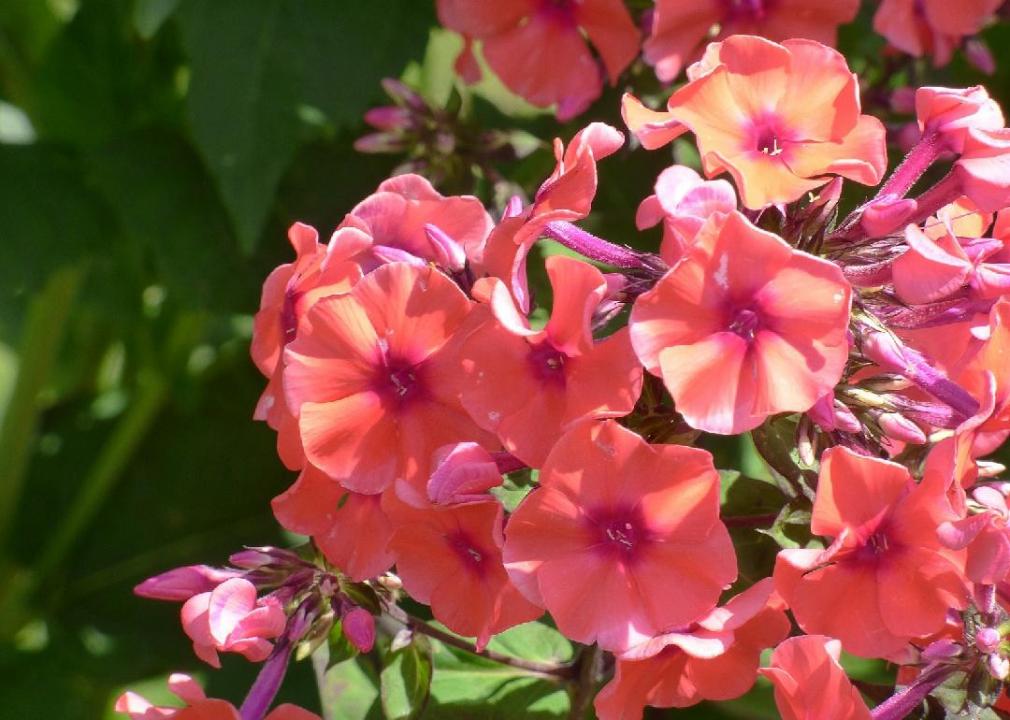
Zbigniew Niepokój // Wikimedia Commons
Garden phlox
– Scientific name: Phlox paniculata ‘Grenadine Dream’
– Bloom period: July to October
The garden phlox is a native of the United States from New York south to Arkansas that has escaped cultivation and has naturalized in other parts of the country, as well. Attractive to hummingbirds and butterflies and resistant to deer, it prefers rich, moist soil, and is intolerant of heat and humidity. To avoid powdery mildew, give it good air circulation and don’t wet the leaves when watering.
You may also like: The best streaming services for sports in 2021
T.Kiya // Wikimedia Commons
County Dancer shrub rose
– Scientific name: Rosa ‘Country Dancer’
– Bloom period: May to frost
“County Dancer” is a variety of the shrub rose with semi-double pink flowers and few thorns that blooms to the first frost. Shrub roses don’t require the intensive pruning of other types, but all roses are susceptible to diseases, including black spot, rust, and powdery mildew, as well as a wide range of insect pests.
HomeinSalem // Wikimedia Commons
Dolly Parton Hybrid tea rose
– Scientific name: Rosa ‘Dolly Parton’
– Bloom period: May to frost
The hybrid tea is the classic rose of the florist’s bouquet. This variety has very fragrant orange-red blossoms that bloom in May and continue in flushes through to frost. Like all hybrid teas, it requires severe pruning and is subject to several disease and pest problems.
A. Barra // Wikimedia Commons
Nevada hybrid moyesii rose
– Scientific name: Rosa ‘Nevada’
– Bloom period: May to frost
This shrub rose has fragrant white flowers with yellow stamens on arching red stems attractive to butterflies. It prefers full sun and needs regular deep watering, keeping the foliage dry to help prevent disease. Mulch to ensure the roots are cool in summer and to protect the crowns in winter in cold areas.
Christian Fischer // Wikimedia Commons
Orange coneflower
– Scientific name: Rudbeckia fulgida
– Bloom period: June to October
The orange coneflower is a native of the southeastern United States. It prefers full sun and consistent moisture but will endure some drying out once it is well established, and tolerates poor soil and polluted air. The blooms attract butterflies and make good cut flowers.
Fritzflohrreynolds // Wikimedia Commons
Brown-eyed Susan
– Scientific name: Rudbeckia triloba
– Bloom period: July to October
This native of the central and eastern United States is a biennial or short-lived perennial, but easily naturalizes in the garden by self-seeding. Resistant to deer, it’s tolerant of summer heat, and a certain amount of drought, and isn’t too fussy about soil. It’s susceptible to powdery mildew, as well as snails and slugs attacking young plants.
松岡明芳 // Wikimedia Commons
Blue sage
– Scientific name: Salvia azurea
– Bloom period: July to October
Native to the southeastern United States, this low-maintenance perennial prefers full sun and good drainage and tolerates drought and dry, shallow, or rocky soil. Butterflies like it and deer do not, and it’s not troubled by insects or disease.
Don McCulley // Wikimedia Commons
Pineapple sage
– Scientific name: Salvia elegans
– Bloom period: August to October
Pineapple sage is native to Mexico and Guatemala. Its name comes from the pineapple-like fragrance of the leaves. Attractive to hummingbirds and butterflies and resistant to deer, it requires well-drained soil and will not survive the winter outside zones 8 through 10 so should be grown as an annual or taken indoors for the winter.
David J. Stang // Wikimedia Commons
Pincushion flower
– Scientific name: Scabiosa ‘Butterfly Blue’
– Bloom period: April to frost
This long-blooming variety of the pincushion flower grows in compact clumps about 12 to 15 inches tall. It is drought tolerant and can take some shade, especially in hotter climates. Good drainage is essential and gardeners need to watch out for powdery mildew, aphids, and whiteflies.
Kurt Stüber // Wikimedia Commons
Hopewell stonecrop
– Scientific name: Sedum ‘Hopewell’
– Bloom period: August to October
This variety of sedum has deep pink flowers and ruffled blue-gray foliage and grows in a mound 16 inches tall. Good drainage is critical but otherwise this is a low-maintenance plant tolerant of poor soil, drought, and bad air; attractive to butterflies; and unappealing to deer.
Harry Rose // Wikimedia Commons
Canadian goldenrod
– Scientific name: Solidago canadensis
– Bloom period: August to October
This relative of the sunflower is native to most of North America and is often found in fields and along roadsides. It’s attractive to pollinators and prefers full sun. It can be somewhat aggressive in the garden, spreading both by rhizomes and via self-seeding.
Paul Hermans // Wikimedia Commons
Japanese spirea
– Scientific name: Spiraea japonica ‘Walbuma’ Magic Carpet
– Bloom period: June to October
Spirea is a flowering shrub of the rose family that spreads both by suckers and self-seeding that can be invasive in the eastern United States. It can tolerate a range of soil conditions and is resistant to deer. This variety has pink flowers that are attractive to butterflies.
Keisotyo // Wikimedia Commons
Toad lily
– Scientific name: Tricyrtis macrantha
– Bloom period: August to October
The toad lily is a native of Japan that tolerates heavy shade and wet soil. With a weeping habit and nodding flowers, it’s often found in its native habitat cascading off rock formations. It prefers a rich, moist, slightly acidic soil that isn’t allowed to dry out.
You may also like: The best streaming services for football in 2021
